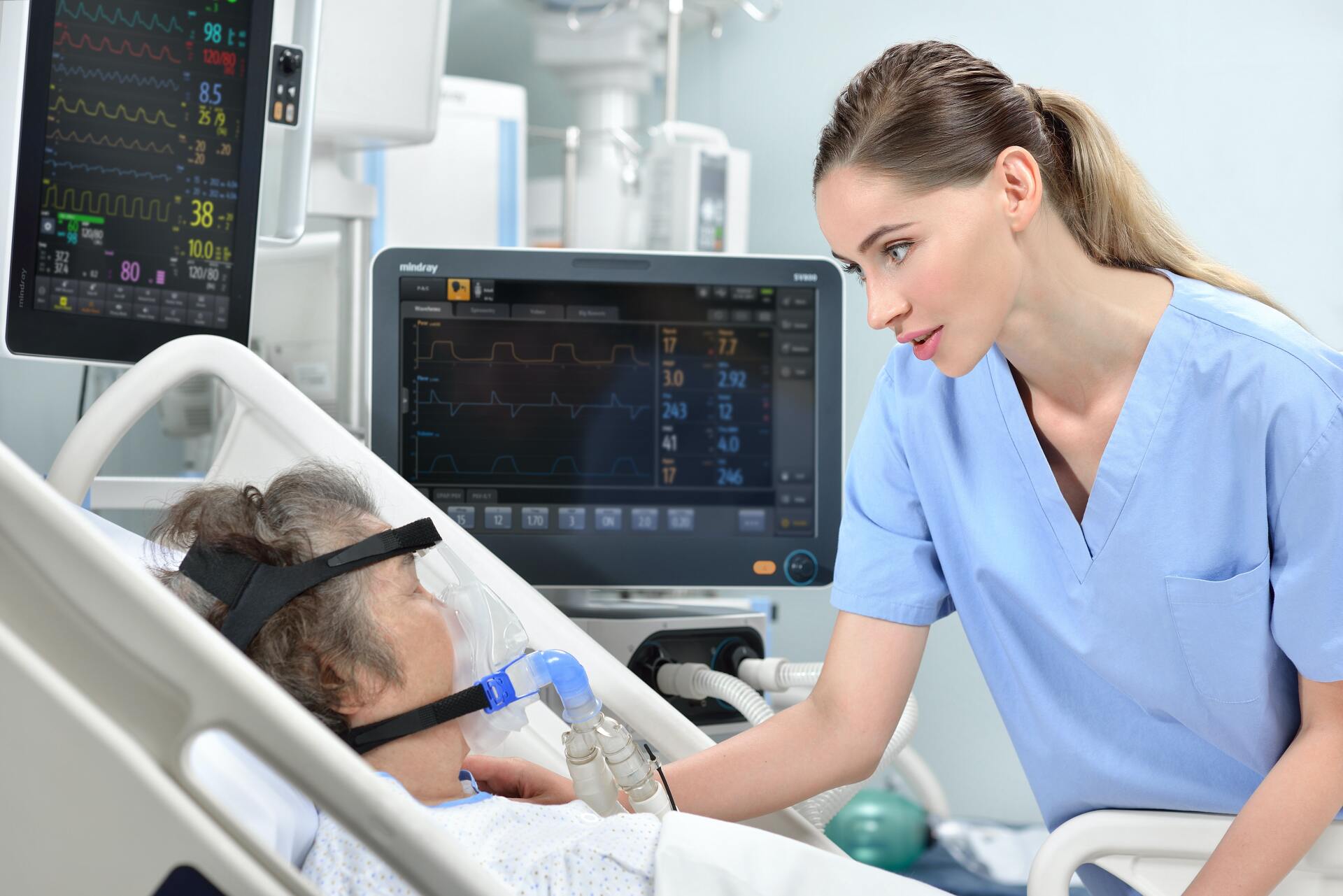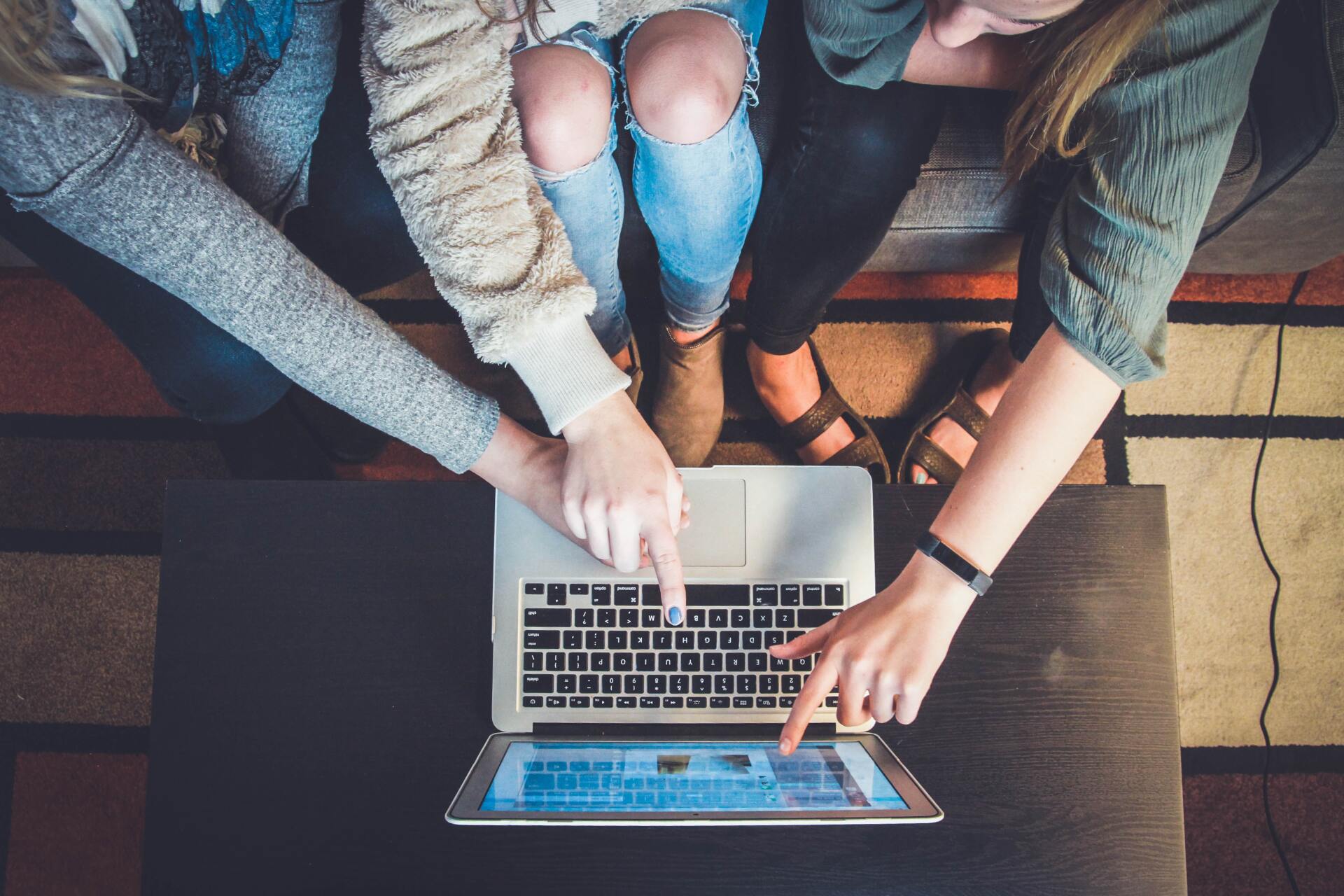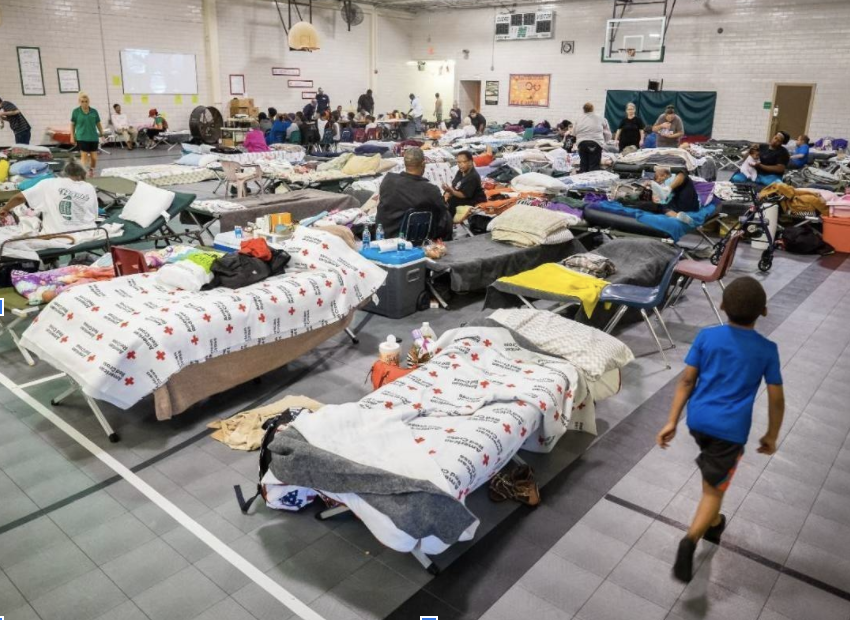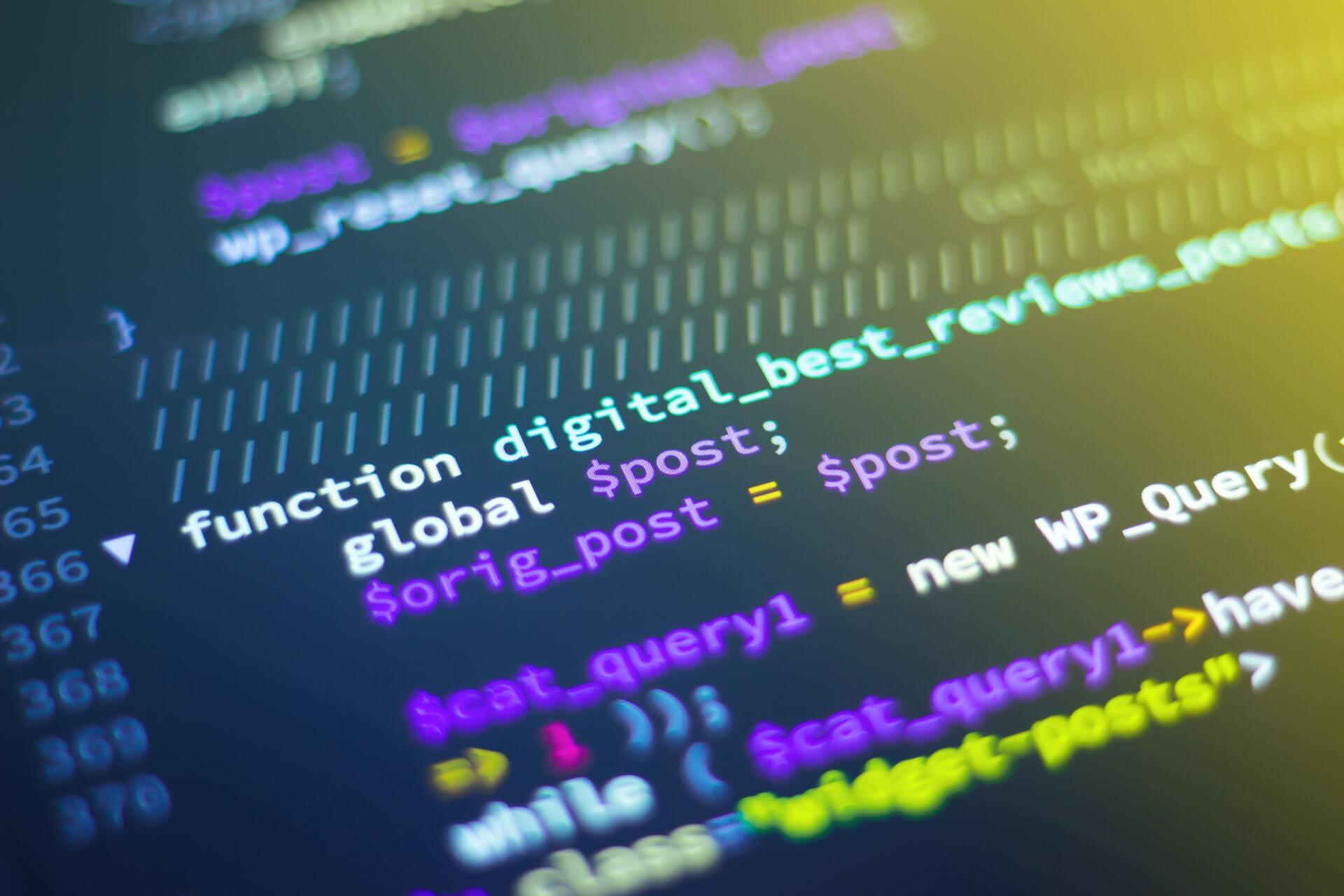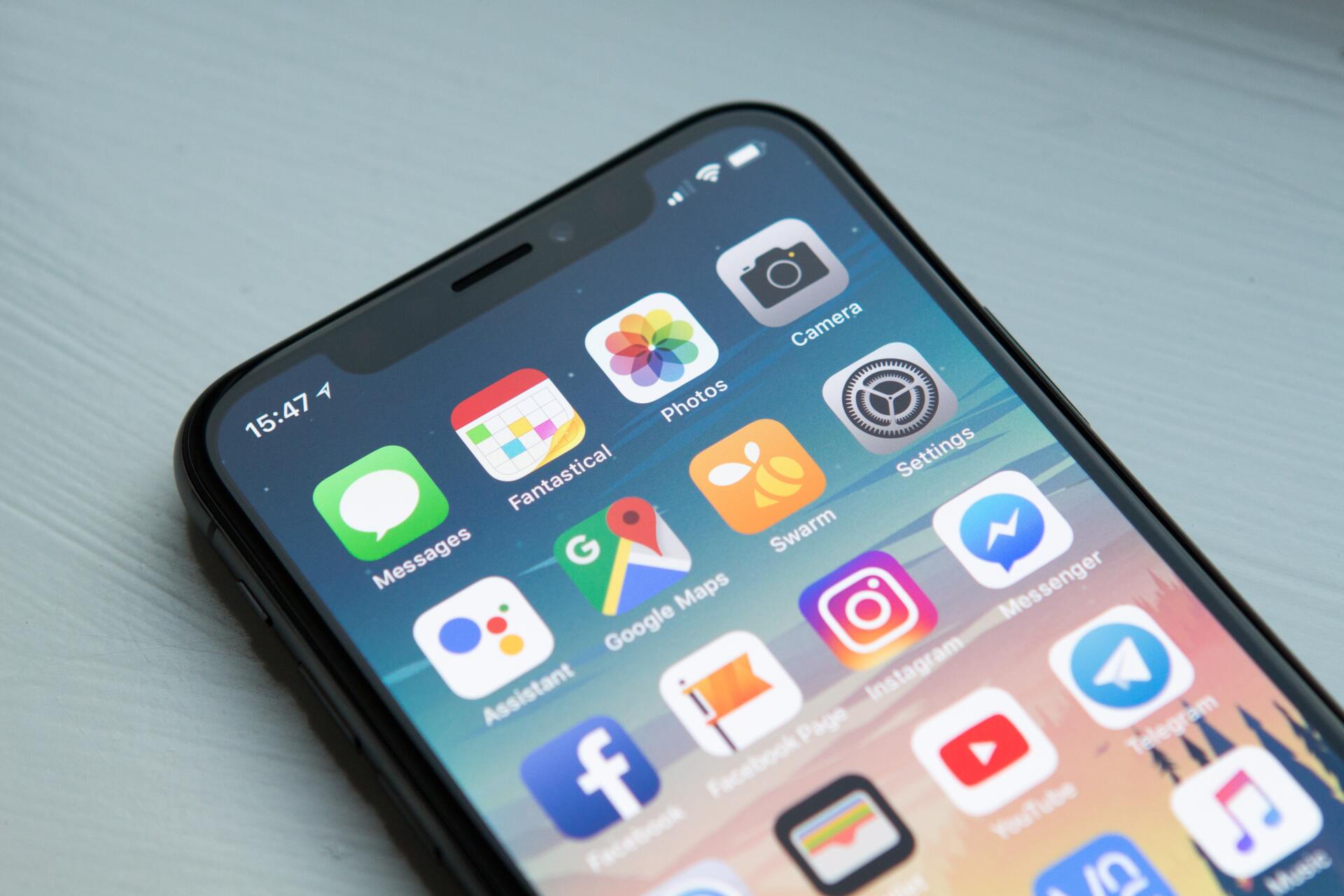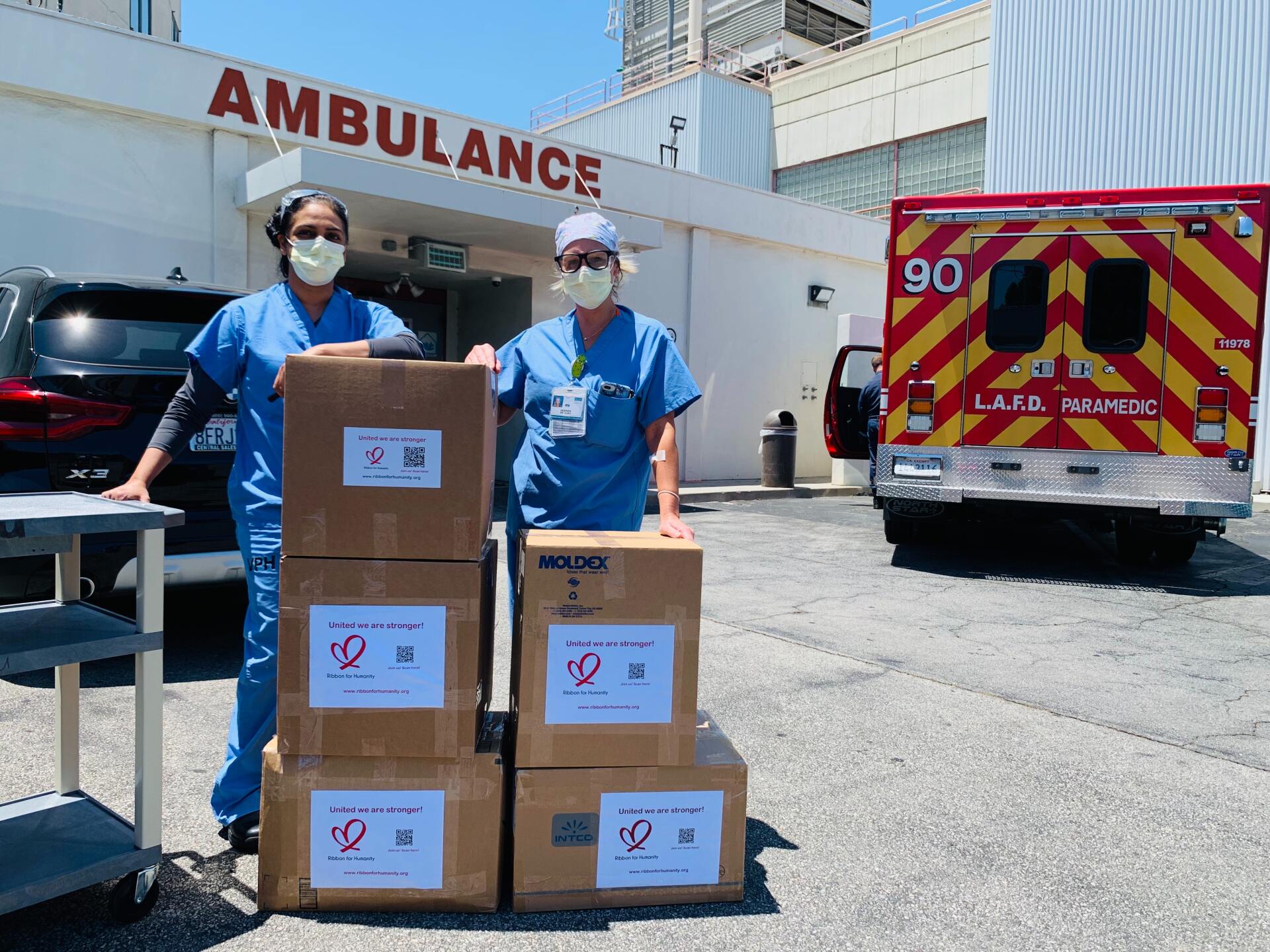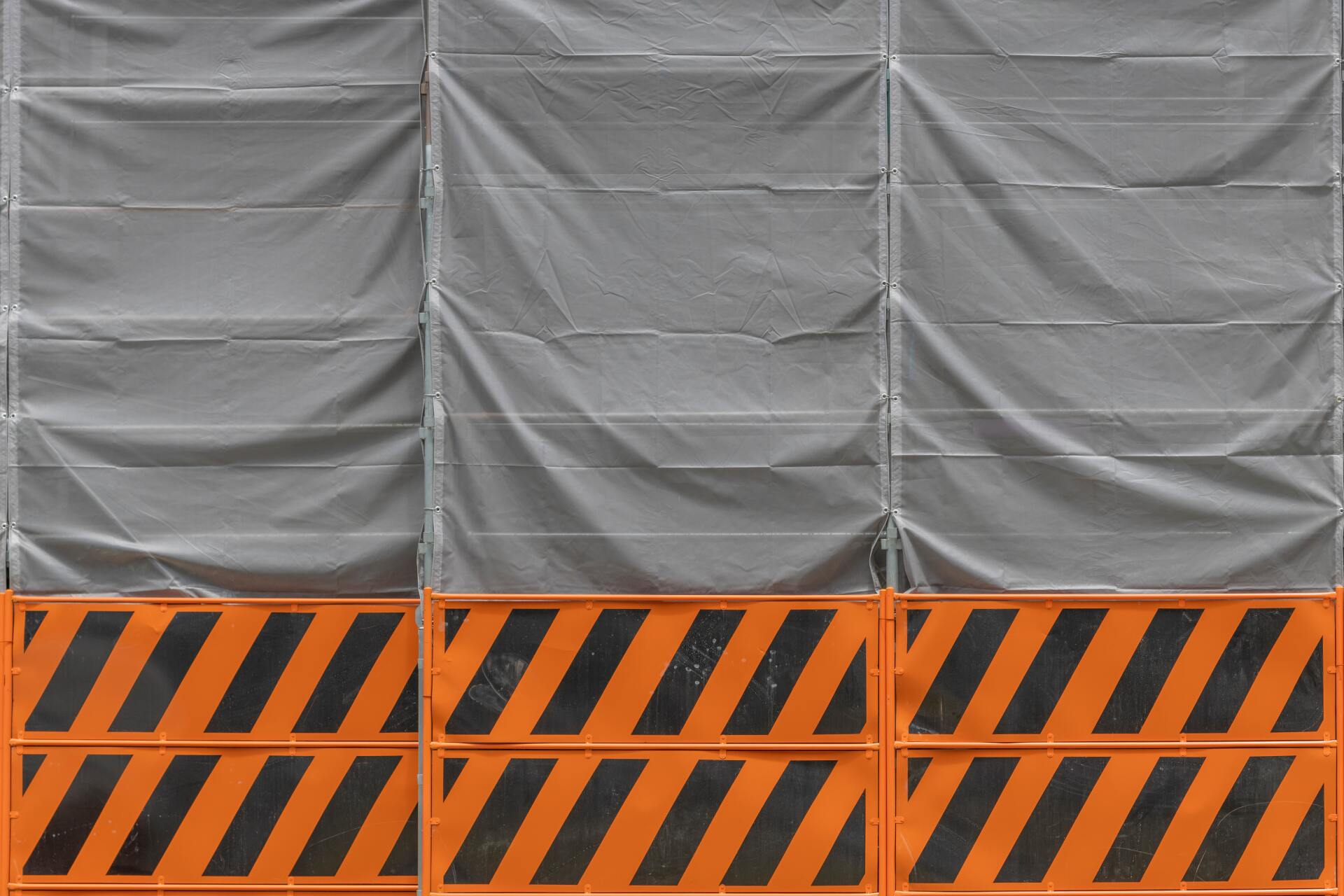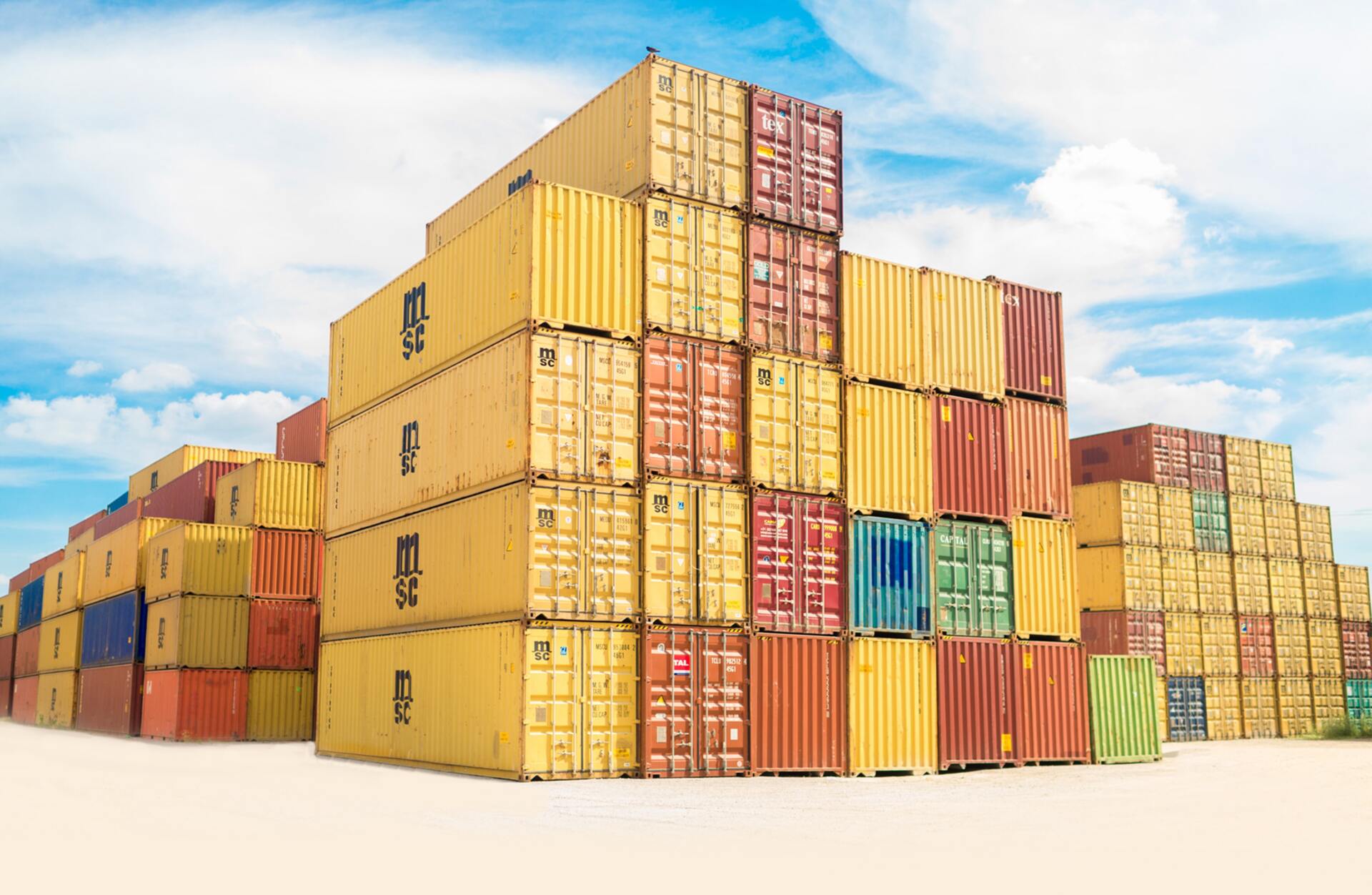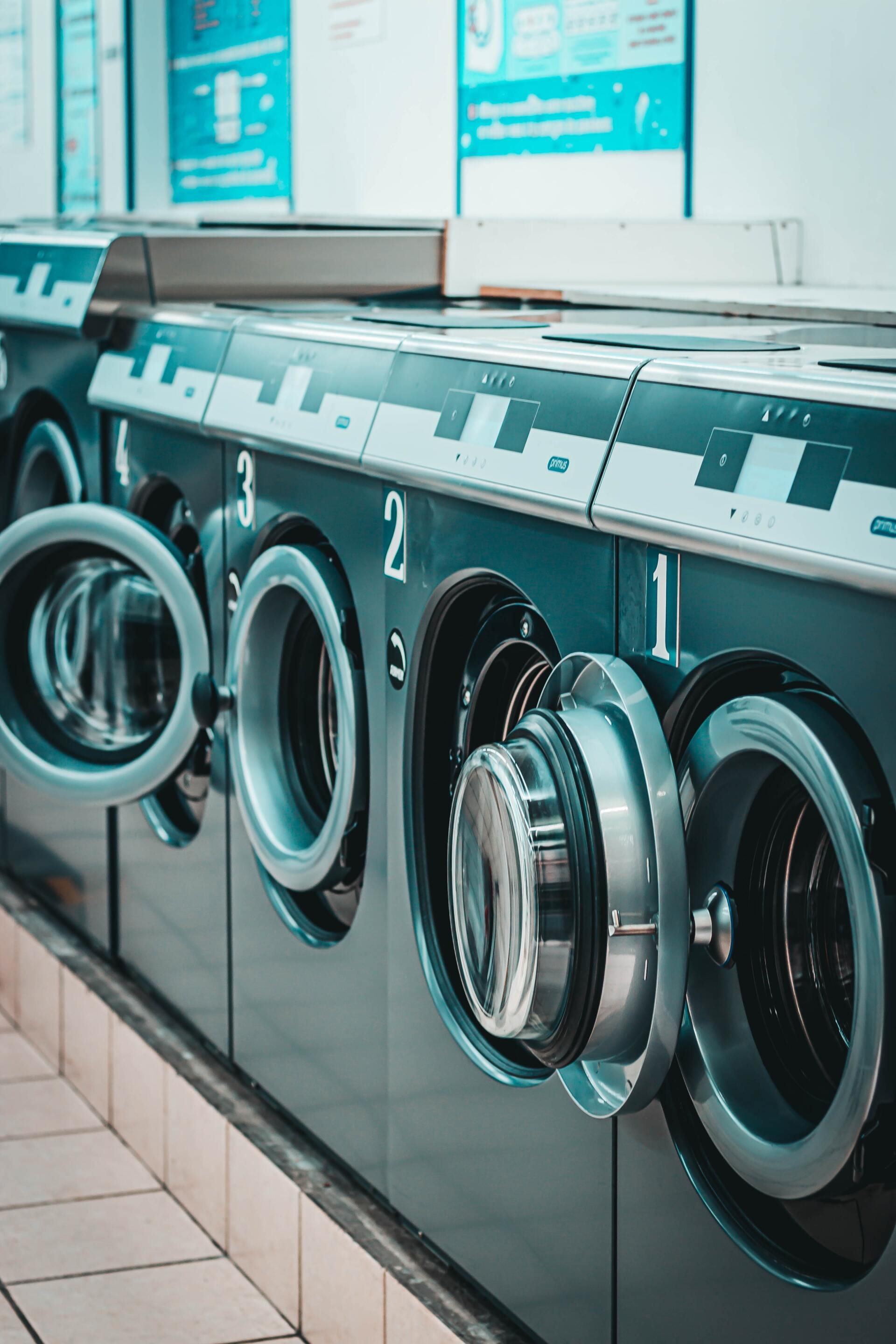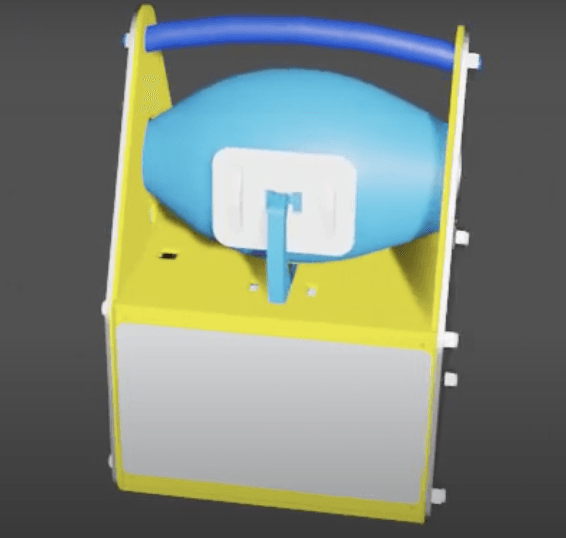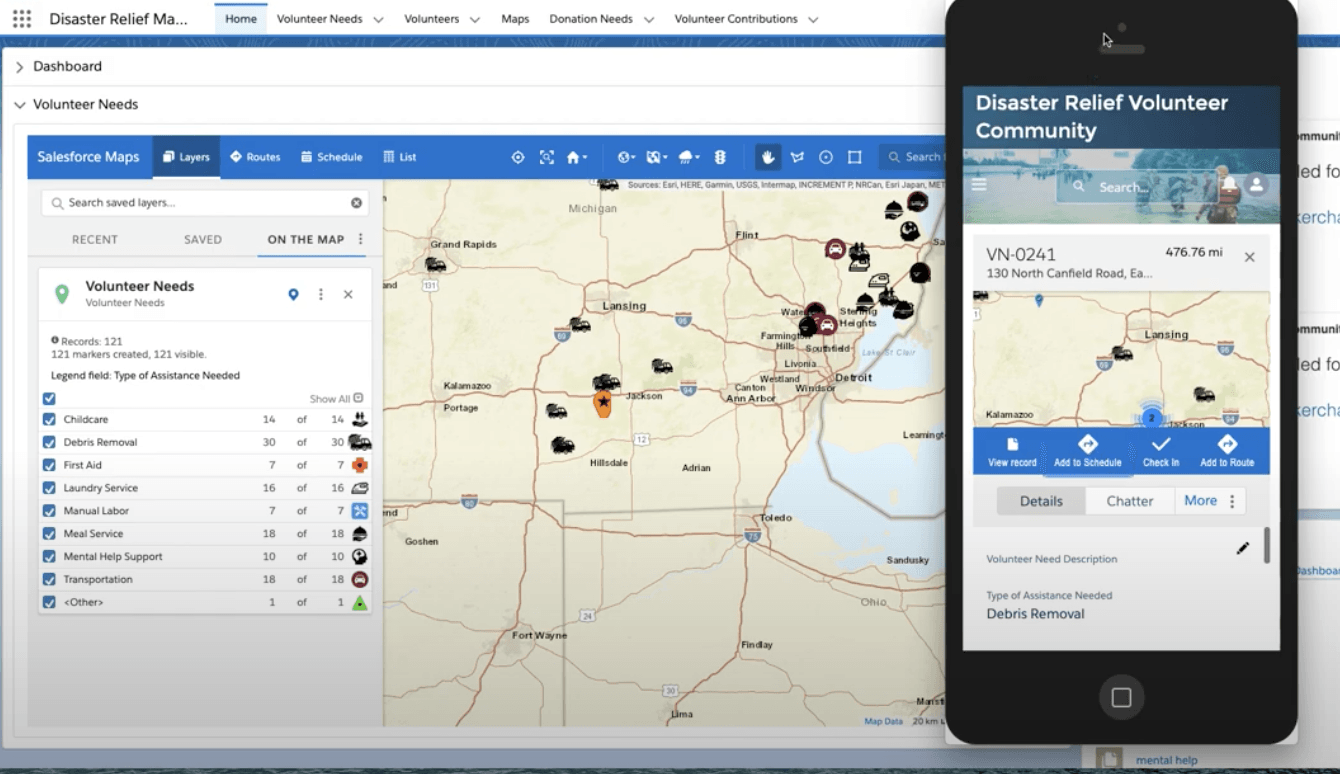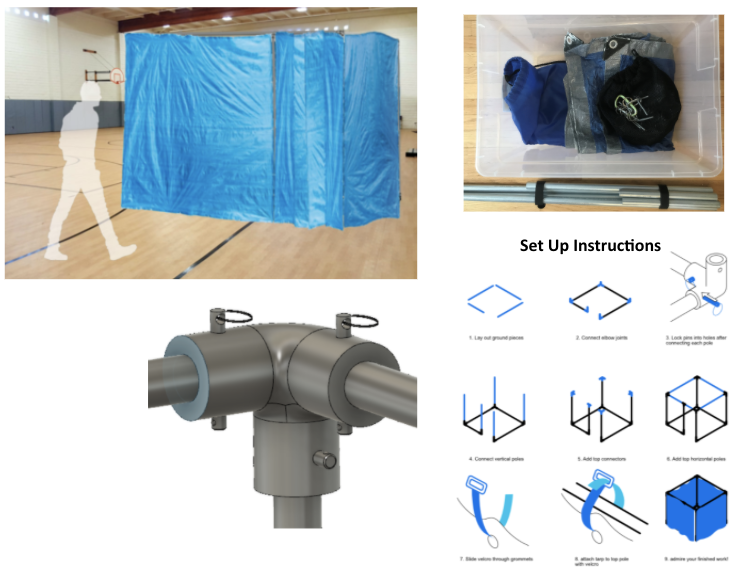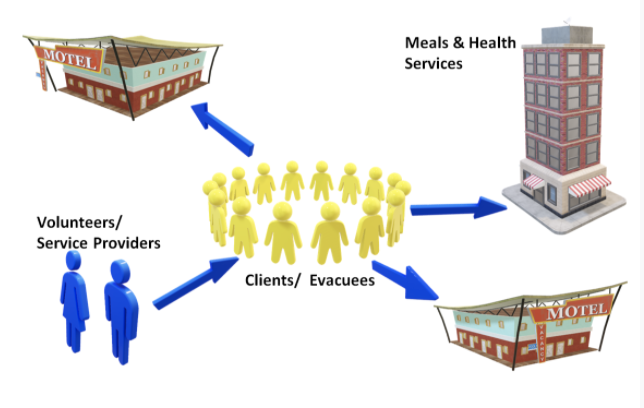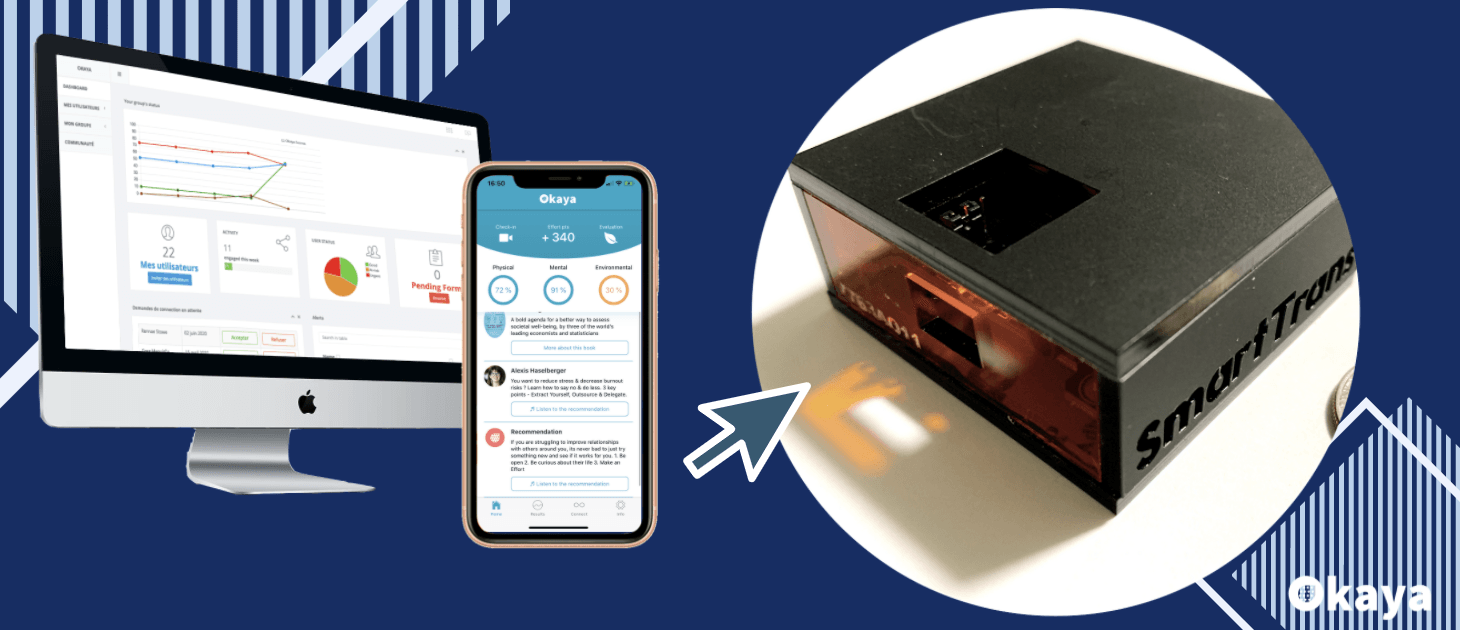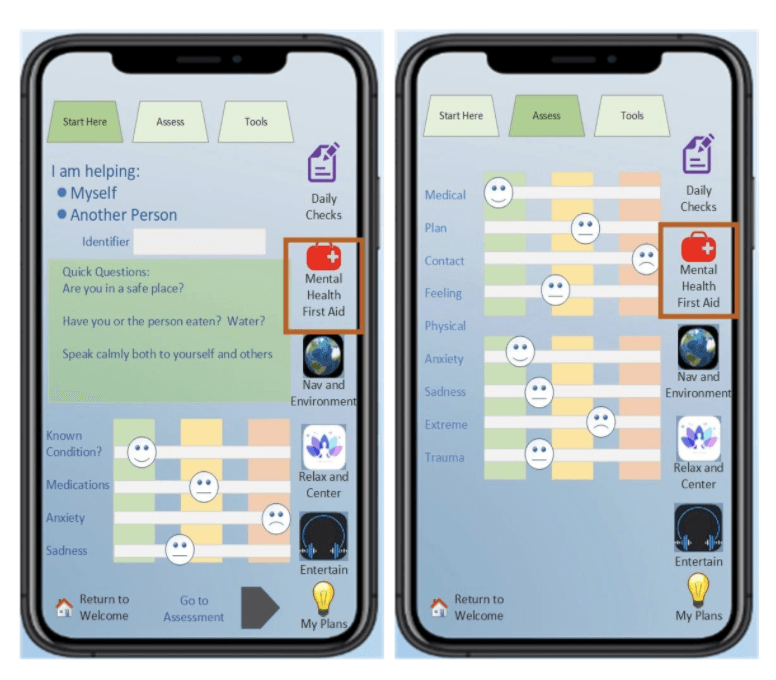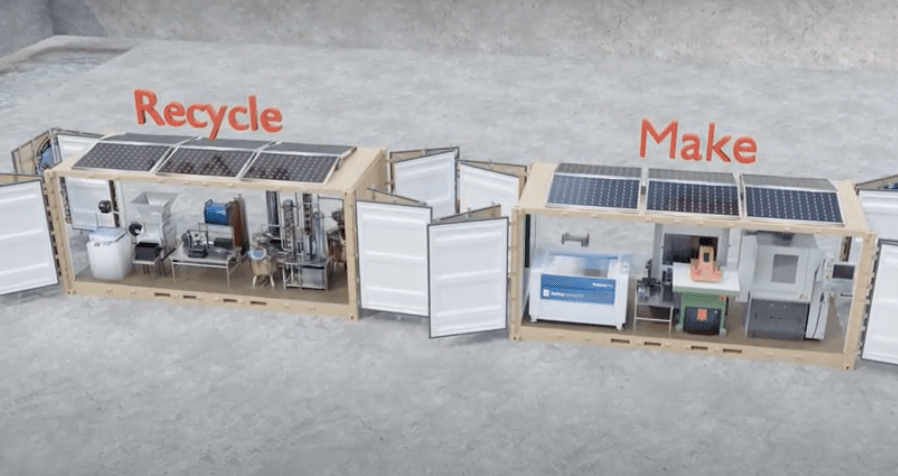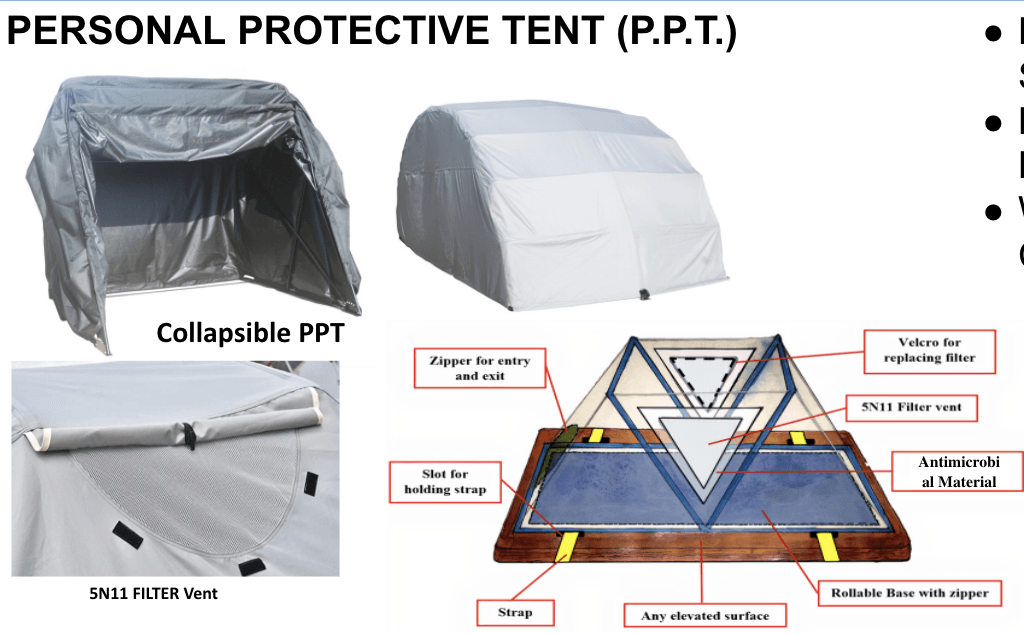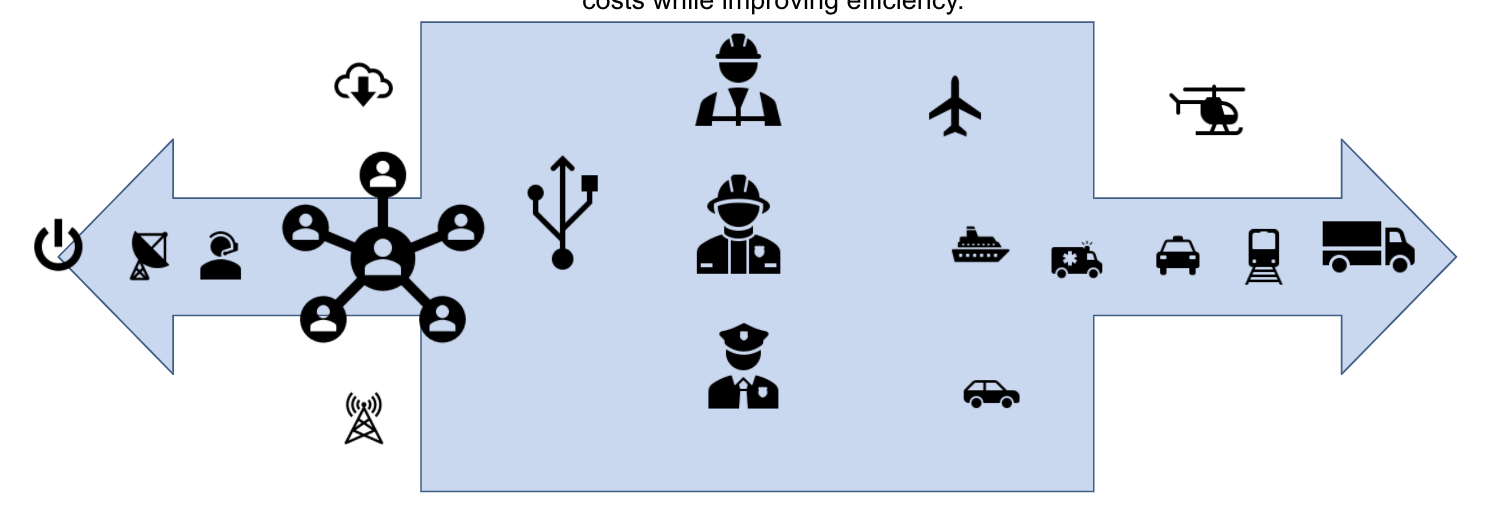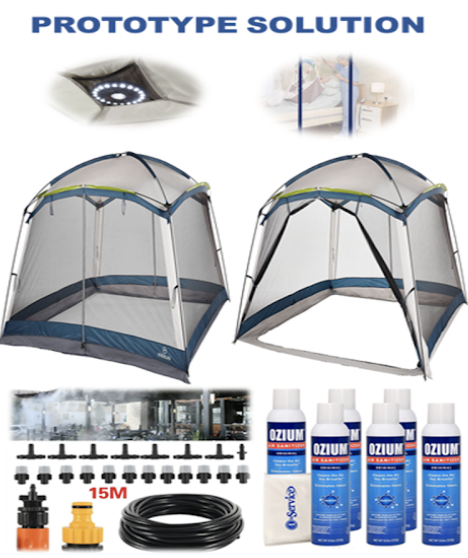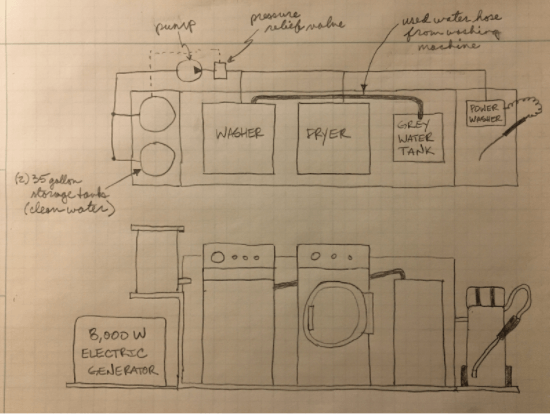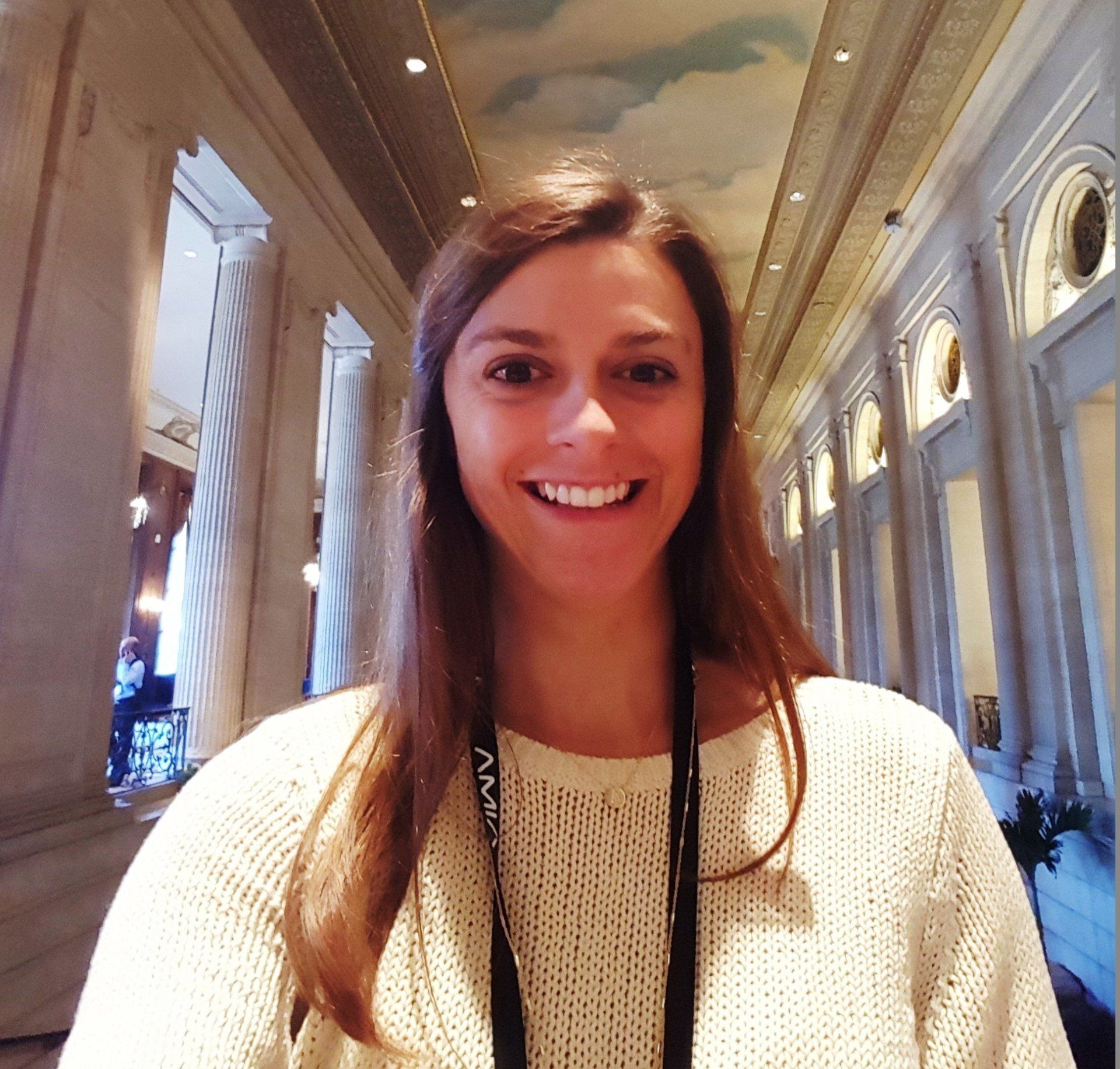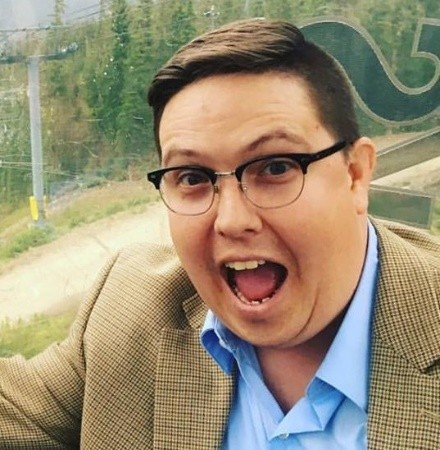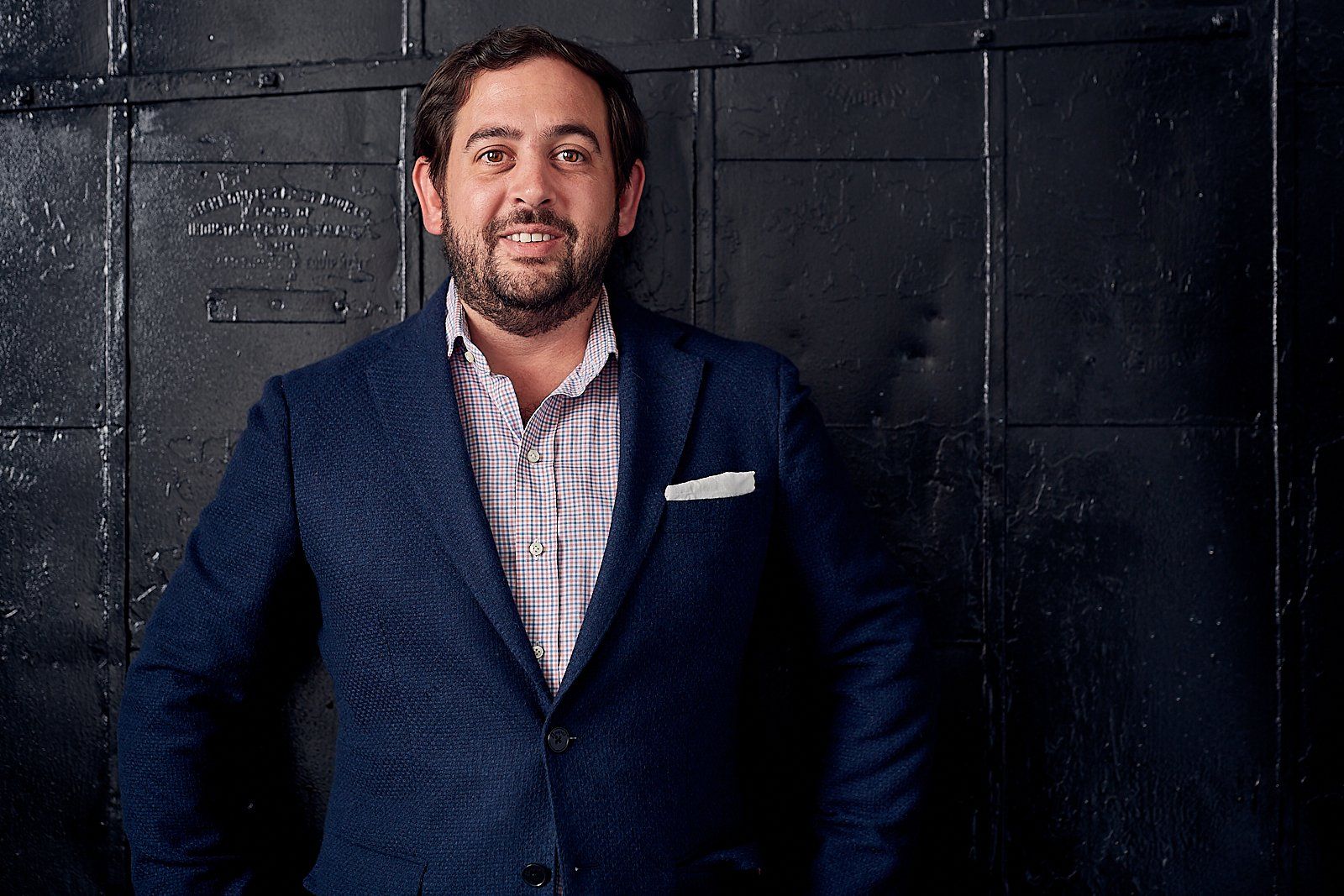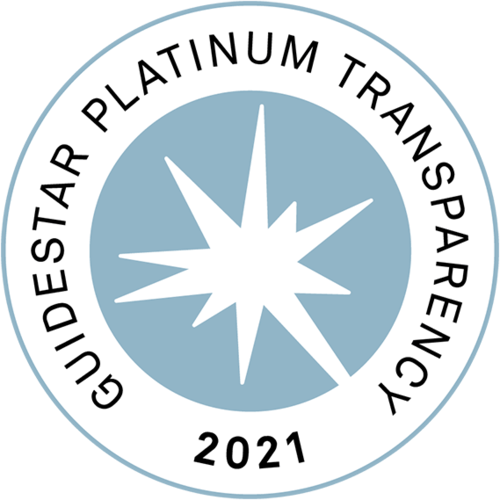COVID-19 Maker Challenge V: Disaster Relief Workers
The Challenges
-
Ventilator
ButtonThe scarcity of ventilators has put many at risk during the COVID-19 pandemic. The challenge here was to build a light, portable ventilator made from easy-to-access, recyclable materials. This ventilator should also optimize human resources in the disaster field by providing breathing automation during resuscitation. Centralized monitoring could simultaneously control several ventilators in order to alleviate first responders' tasks during disaster relief efforts.
-
All Hands on Deck
ButtonDue to COVID-19, organized disaster relief efforts were slower to deploy as they had to adjust to the new context. Community-led efforts have had to fill in as they could on the ground, setting up shelters, organizing volunteers, and coordinating tasks, mainly through text message and excel spreadsheets. An application or easily accessible online system to coordinate community-led efforts to respond to natural disasters locally would streamline these activities and make them more effective.
-
Safe Haven
ButtonNormally in a natural disaster with many residents displaced, organizations will set up shelters in large spaces like gymnasiums, offering rows of cots and provisions. With COVID-19, this option has not been available due to high risk of spread. Thus, these organizations have been stretching their budgets to cover hotel costs for evacuees. Are there innovative mitigation measures that would allow for the more financially sustainable and streamlined temporary shelters to be in use again?
-
Aid Station
ButtonDue to COVID-19 the congregate sheltering option is limited. Organizations like the Red Cross have begun placing those impacted by larger disasters into hotel rooms. In this context, they are trying to provide additional services (feeding, health, mental health, etc.) to a large number of people dispersed throughout counties and states. They are looking for a solution that would allow each evacuee to check in each day and provide an update regarding their status and their needs.
-
Mental Toolkit
ButtonWhen a person deploys to assist in a disaster situation they make certain to take all of their physical needs
with them (e.g. Clothing, food, et.c), but what they do not take with them is a guide to taking care of their mental wellbeing. Arming volunteers with a mental health toolbox app would allow the user to quickly access resources to assist individuals through a mental health crisis could markedly lower the stress in the volunteer and assist the individual through the crisis. -
HermTac Hurricanes
ButtonIn the midst of COVID-19 supply chain failures have affected many communities, including disaster relief efforts. The idea is to build a configurable microfactory with various manufacturing technologies to address this issue. Make whatever you need, when you need it. On site.
-
Tent Dividers
ButtonDue to limited space and supplies, disaster relief workers often have to share tents during deployments. When they can't maintain the safe distancing practices for COVID-19, what other solutions could help to keep them safe from contracting the virus? A barrier to separate them and perhaps even repel or kill the virus would be beneficial.
-
Ride Share
ButtonTransportation of supplies and people is a huge challenge for many organizations responding to natural disasters and it became even more so in the context of COVID-19. There is a potential point of collaboration here among the multiple relief organizations, who could share information and coordinate shared transportation. A common solution for coordinating
transportation needs across organizations would be immensely beneficial.
-
Mobile Wash
ButtonWhen natural disaster hits, displaced residents need a variety of services. Laundry is one of those essential services, as they often have more limited clothing options and donated items need to be laundered as well. A deployable on-site laundry facility would make this service available quickly.
-
Pandemi 800 Ventilator
ButtonWinner of the iEX Design Award, PANDEMI VENT 800 is a $300 Open Source ventilator built using highly available commodity hardware, a novel low-cost sensor package, and 3D printed parts. It includes all basic features of a ventilator, in addition to a centralized monitoring station and a resuscitation automated assistance breathing mode.
-
Mobile Site for Volunteer Management
ButtonWinners of the User Experience Award, The Acumen Solutions team designed a disaster relief management application to allow organizers to manage volunteers, donations, healthcare, and social media communications. It also features a community portal for volunteers to sign up to help.
-
Modular Barriers and Mitigation Protocol
ButtonWinners of the Feasibility Award, Team Safe Haven II designed a physical prototype featuring a modular, easy-to-assemble barrier to create private spaces that are easy to sterilize. Their procedural solution featured check-in protocols and updated floor plans to facilitate distance, ventilation, and user movement.
-
Aid Station
ButtonWinners of the Business Value Award, Team Aid Station, a collaborative effort between companies Medi-Code and InstaMD, worked on a mulit-interface application that would allow the Red Cross to replace their Excel spreadsheets to more efficiently coordinate volunteers, service providers, and clients (evacuees) in one place.
-
Okaya
ButtonWinners of the Innovation Award, the Okaya digital assistant application allows disaster relief managers to monitor the mental state of first responders and workers in the field. Depending on their state, it also recommends mental health resources to first responders and inhabitants tailored to their particular needs. The application can function with or without connectivity.
-
Mental Health Toolkit App
ButtonTeam Mental Toolkit designed a mental health application that allows responders to enter and customize their own wellbeing plan, reminders, and tools to support them before, during and after an incident. It also helps them to monitor and effectively assist someone in crisis.
-
Configurable Micro-Factory
ButtonUtilizing shipping containers, the microfactory is a transportable manufacturing (and recycling) system that can be delivered to disaster zones to provide the tools, technology, and machinery needed to make, repair and recycle critical items on site from accessible raw materials.
-
Personal Protective Tent and Biocence Mist
ButtonTeam Tent Dividers devised a multi-stage approach to protect all personnel and equipment by 1) misting FDA approved BIOCENCE on all hard and soft surfaces and 2) providing modular personal protective tents with a replaceable filter system and made of antimicrobial materials.
-
Transportation Logistics Coordination Site
ButtonThe team proposed a centralized communication and coordination system to aggregate needs and optimize transportation across multiple disaster relief agencies and organizations. The solution builds on Auxilia to identify what organizations need on the ground, adding a new application for fulfillment, tracking, and prioritization.
-
Tent and Disinfection Protocols
ButtonIn order to mitigate the risks of COVID-19 spread in a congregate shelter for evacuees, the team - composed of all women Veterans and one military spouse - explored different options for physical barriers, check-in, and sanitization. Their multifaceted solution included equipment maintenance, client check-in guidelines, tent assignments and rules, and facility engagement procedures.
-
Mobile, Stand-alone Laundry System
ButtonThe team endeavored to design a mobile, compact, stand-alone laundry system that can be used during disaster relief efforts. The system can be transported easily on a trailer and contains its own water supply (fresh water storage tanks), own grey water container (storage tank), and own power supply (8000W gasoline generator).
The Judges
-
Allison Amrhein
ButtonAllison is the Director of Operations for the Veterans Health Administration (VHA) Innovators Network (iNET), Allison received her Master of Public Health from the University of Kentucky and Health Administration degree from Indiana University.
-
Conor McClintock
ButtonConor is the Regional Innovation Officer (RINO) for the Federal Emergency Management Agency (FEMA) at the Region VIII office in Denver, Colorado. As the RINO, he works across FEMA, federal agencies, and the private sector to build relationships and foster innovation and creative solutions to persistent bureaucratic problems. He spent the last 10 years with FEMA in various positions in finance and operations and is a proud US Navy Veteran. He lives in Colorado with his wife and two toddler boys who love to keep him on his toes!
-
George Gitchel, PhD
ButtonGeorge is a biomedical engineer serving as a senior advisor to the VHA Innovation Ecosystem as well as director of clinical research for the southeast regional Parkinson’s disease research, education, and clinical center. His primary research involves eye movement patterns in people with movement disorders and utilizing them for differential diagnoses; as well as other interests in transcranial magnetic stimulation, and human factors engineering. His work on oculomotor control spans from conception and research, to development, publication, licensing, litigation, receiving a US patent, FDA breakthrough device designation and international sales success.
Join Our Mailing List
Thank you for joining the Challenge America mailing list!
To avoid any disruptions, please make sure to authorize your email service to accept messages from Challenge America
Thank you for joining the team!
Dallas Blaney
Executive Director
Challenge America
Please try again later.
Follow us on Instagram
-
Dear Challenge America Colleagues & Friends, As the holiday season invokes the spirit of gifting and gratitude, we invite you to join us in celebrating #GivingTuesday, the global day of unity. At Challenge America, it is our mission to connect service members, Veterans, and their families to resources and solutions that build community and give purpose to their lives. To achieve this mission, our team leverages innovation, the creative arts, and community-building strategies. From the beginning, we set out to challenge the status quo by designing and scaling innovative, evidence-based solutions to the needs of the military community - no matter where they live. By leveraging technology, the creative arts, and community solidarity, we are challenging America to think differently about how we serve our military. Today, we humbly ask that you consider making a tax-deductible donation to support Challenge America. A contribution of any amount will help us to achieve our mission and bring more of our innovative programming, products, and services to our Veterans. Here’s how you can support Challenge America this Giving Tuesday: ✨ Make a tax-deductible donation of any amount ---> www.challengeamerica.com/donate ✨ Encourage Veterans you know to check out our online communities CAVARTS at www.cavarts.org and the Military Sisterhood Initiative at www.militarysisterhoodinitiative.org ✨ Help spread the word about the work we do by telling your friends and family about Challenge America or creating a social media post . . . It is a great honor to serve our military community in such a meaningful and impactful way, and we can’t thank you enough for your continued support!Button
-
Today and every day, we honor and remember the sacrifices made by our Veterans and service members in defending our freedom. These brave individuals have selflessly put their lives on the line for our country and for the ideals we hold dear. Whether serving on the frontlines or supporting operations from afar, each and every member of the military plays a vital role in keeping us safe. So on this holiday and throughout the year, let us take a moment to thank our Veterans for their service and dedication. Our gratitude is eternal and cannot fully express the appreciation we have for their sacrifice. To our Veterans, we extend our profound gratitude and highest admiration for your selfless service and the sacrifices you have made for our beloved country. Your unwavering dedication and unparalleled bravery have helped protect the safety, freedom, and prosperity of our nation, and we are eternally grateful for your contributions. Thank you, Veterans, for everything you do to protect us and preserve our way of life. We honor and salute you today and always. Your stories of valor, courage, and resilience are cherished and remembered today. Your unwavering commitment to defending our values and ideals inspires and connects us, reminding us of the true meaning of patriotism and the unified spirit of our nation. Your legacy will continue to shape our nation for generations to come, as your service has helped protect democracy and pave the way for a brighter future for us all. Your service and sacrifice will never be forgotten. We are eternally indebted to you for your unwavering dedication and the countless ways you have enriched our lives. Today, may you enjoy this celebration together through connection here in the Challenge America communities, and with the loved ones surrounding you. We are so grateful for YOU! Wishing each of you a wonderful Veterans Day and thank you for being an integral member of our communities. To our Veterans and service members, we extend our heartfelt gratitude for your selfless service and sacrifice, and for all the ways you make the Challenge America communities so incredibly special. 🇺🇸 #veteransday #veterans #music #artButton
-
We're so excited to showcase these beautiful guitars decorated by local artists in the Roaring Fork Valley for Challenge America's Music Therapy program. These guitars will go to Veteran participants in an upcoming music therapy retreat! We look forward to sharing more designs as they come in. Contact us at info@challengamerica.com If you are interested in decorating a guitar for this program. Matt Hays @radiantwraith Matthew McKinley Hays- Professional Tattooer Carol Espinoza @carolespinozav97 Joslyn Doerge jozd.org @jozdfineart @ReScapesLLCR Alicia Tripp #MusicTherapy #CommunityArt #LocalArtists #RoaringForkValley #GuitarArt #supportlocalartists See lessButton
-
September 11th is a day that is deeply ingrained in our nation's shared consciousness. Twenty-three years have passed since that fateful day when our world was forever changed by acts of terror. On September 11, 2001, the fabric of our society was tested, and in its wake, we witnessed the strength, unity, and compassion that define us as a nation. As we observe the twenty-third anniversary of September 11, 2001, we pause to reflect on the profound impact of that day. For Veterans – those of you here in our community – this anniversary is also deeply significant, intertwined with your shared experiences of service and sacrifice. The aftermath of 9/11 ignited a surge of unity and patriotism, drawing many Veterans into roles that reshaped their lives and careers. Your bravery, commitment, and sacrifice is a testament to the American values of honor and resilience. Today, we remember not only the nearly 3,000 lives lost on 9/11 but also the service members who have sacrificed their lives since then. We honor the families who have borne the weight of these losses and those who support our Veteran community. Their strength is integral to our collective resilience. We here at Challenge America recognize each and every hero that risked their life that day, and we pause to recognize and honor those that were lost. Thank you for your unwavering service. Your courage and sacrifice shape our nation’s story and inspire us all, and we will never be able to fully express our gratitude. Take special care of yourselves today, and remember that you are cared for and supported by a network of fellow Challenge America community members with shared experiences.Button
-
On this 80th anniversary of D-Day, we reflect on the lives lost, the survivors, and their impact with solemn gratitude and remembrance. On June 6th, 1944, the largest military operation of modern times landed 156,000 Allied forces from the U.S., Britain, and Canada by sea and air on 5 beaches in Normandy, France in an effort that would change the course of World War II. Under the codename “Operation Overlord”, the invasion of Nazi-occupied France claimed more than 4,400 Allied lives and many more, including French civilians. Today, we pause to honor the lives lost and the survivors, who courageously fought for peace. This week, World War II Veterans from the U.S., Britain, and Canada have traveled to Normandy to commemorate the 80th anniversary of the D-Day landings that helped lead to Hitler’s defeat. At the ceremonies, French President Emmanuel Macron awarded the Legion of Honor, France’s highest distinction, to 11 U.S. Veterans and a British female Veteran. Additionally, Macron awarded the Legion of Honor to 103-year-old Christian Lamb. Christian is the daughter of a Royal Navy admiral. She was studying in Normandy when her father called her back to London in 1939. In London, Lamb worked tirelessly to create detailed maps that guided the crews of landing crafts on D-Day. Though they were not yet able to take part in the combat, women played a vital role in the invasion operation. Included were the many women who proudly rolled up their sleeves to work in factories where they built bombers, tanks, and other weaponry. While their contributions were long overshadowed by the combat exploits of men, their bravery and dedication in stepping into the factories and taking on the behind the scenes roles greatly helped enable the men to fight. To this day, D-Day Veterans continue using their voices to echo a message they hope will live on eternally: “Never forget.” May we carry this message today and every day. To our Veterans and service members - we are forever grateful for your choice to serve. We know this service comes at a cost, and although our recognition cannot fully encapsulate the gratitude we hold, we want you to know they will never be forgotten. 🙏Button
-
On this Memorial Day, we are reminded of the courageous men and women who made the ultimate sacrifice in service to our country. It’s a time for reflection, gratitude, and remembrance. We recognize the profound significance of this day and stand in solidarity with all those who have lost loved ones defending our freedoms. To our Veterans and service members - while we know that remembrance and honor should not ever be contained to a singular day, we do want to pause and thank each and every one of you for the service and sacrifices you have made to defend our freedoms. We are forever grateful for your choice to serve - we know this service comes at a cost, and although our recognition cannot fully encapsulate the gratitude we hold for your sacrifices, we want you to know they will never be forgotten. Today and every day, we honor our fallen heroes.Button
-
Dear Friends and Colleagues of Challenge America, As the holiday season invokes the spirit of gifting and gratitude, we invite you to join our vision to give the gift of music to Veterans nationwide. Our organization connects service members, Veterans, and their families to resources and solutions that build community and give more purpose to their lives. From the beginning, we set out to challenge the status quo by designing and scaling innovative, evidence-based solutions to the needs of the military community - no matter where they live. By leveraging technology, the creative arts, and community solidarity. But we can’t do the work we do without you! This holiday season, we humbly ask that you consider making a tax-deductible donation to support Challenge America. A contribution of any amount will help us to achieve our mission and bring more of our innovative programming, products, and services to our Veterans. Here’s how you can support Challenge America this holiday season👇 ✨Make a tax-deductible donation of any amount at www.challengeamerica.com/donate ✨Encourage Veterans you know to check out our online communities CAVARTS and the Military Sisterhood Initiative ✨Help spread the word about the work we do by telling your friends and family about Challenge America or creating a social media post Together, we can leverage technology and the creative arts to improve the lives of Veterans and their families. We thank you for your thoughtful consideration and for being an integral part of the Challenge America community. With heartfelt appreciation, The Challenge America Team . . . . . #holidayseason #gift #veterans #creativearts #musictherapy #creativearttherapyButton
-
Dear Friends and Colleagues of Challenge America, As the holiday season invokes the spirit of gifting and gratitude, we invite you to join us in celebrating #GivingTuesday, the global day of unity. As you know, our organization connects service members, Veterans, and their families to resources and solutions that build community and give more purpose to their lives. From the beginning, we set out to challenge the status quo by designing and scaling innovative, evidence-based solutions to the needs of the military community - no matter where they live. By leveraging technology, the creative arts, and community solidarity, we are challenging America to think differently about how we serve our military. But we can’t do the work we do without you! Today, we humbly ask that you consider making a tax-deductible donation to support Challenge America. A contribution of any amount will help us to achieve our mission and bring more of our innovative programming, products, and services to our Veterans. Here’s how you can be a part of the #GivingTuesday movement👇 ✨Make a tax-deductible donation of any amount at www.challengeamerica.com/donate ✨Encourage Veterans you know to check out our online communities CAVARTS and the Military Sisterhood Initiative ✨Help spread the word about the work we do by telling your friends and family about Challenge America or creating a social media post Together, we can leverage technology and the creative arts to improve the lives of Veterans and their families. We thank you for your thoughtful consideration and for being an integral part of the Challenge America community. With heartfelt appreciation, The Challenge America Team . . . . . #givingtuesday #veterans #creativearts #musictherapy #creativearttherapyButton
-
This is an incredibly significant day for all of us here at Challenge America - we want to pause and sincerely thank each one of you for the service and sacrifices you have made to defend our freedom. The brave individuals who make up this community share a deep love and loyalty for our country, and have sacrificially chosen to lay their lives on the line in a myriad of different ways to protect our nation. We are forever grateful for your choice to serve - we know this service comes at a cost, and although our recognition cannot fully encapsulate the gratitude we hold for your sacrifices, we want you to know they will never be forgotten. Today and every day, we honor you.Button
-
Join us at Basalt River Park Downtown for the Summer Concert Series on Wednesday, August 30th at 5:30pm! 🎵 The lineup features Challenge America Songwriter Natalie Spears followed by Cruz Contreras (Country). ✨ This is a free concert you won't want to miss. We hope to see you there! . . . . . #concert #freeconcert #countrymusic #nonprofitorganization #communityconcertsButton
-
Have you heard the latest buzz??? 🐝 We are thrilled to announce that the second ever leather crafting competition brought to you by Challenge America and @tandyleather is officially underway! Are you a Veteran that is full of creativity and want to celebrate the holiday season with your leathercraft❓ Check out the competition details below 👇 ✨Deadline: October 2, 2023 ✨Theme: Memorable Gift Giving ✨Guidelines: One piece of leather craft . . . . . To learn more and submit your artwork, visit www.cavarts.org and click “request to join”. #militaryart #veteranartists #memorablegiftgiving #patriot #VeteranButton
-
Have you heard the news❓ We are thrilled to announce the second ever leather crafting competition for Veterans brought to you by Challenge America and @tandyleather ! 💼 🎁 The theme of this year's competition is “Memorable Gift Giving”. The act of surprising and delighting someone with something you have handcrafted is not only uplifting, but also memorable. Your workbench is a space where handcrafted gifts are made with care and sincere fondness for the craft and the recipient. If you want to give handmade gifts for the upcoming holiday season, the time to start is now! Check out the competition details below👇 ✨ Deadline: October 2, 2023 ✨ Theme: Memorable Gift Giving ✨ Guidelines: One piece of leather craft To learn more, visit www.cavarts.org and click “request to join”. . . . . . #militaryart #veteranartists #memorablegiftgiving #patriot #VeteranButton
-
2023 is off to a great start with our art workshops in full force. For all Veterans and Active Duty Service Members interested in picking up leatherworking or fine-tuning their skills, this is a great opportunity! Every last Friday of the month at 4:30 pm PST, the folks at Tandy Leather will offer a new class for the members of our CAVARTS community to practice their leather skills and learn new techniques. Interested? Join us at www.cavarts.org to learn more and sign up! #VeteranArt #TandyLeather ##leathercraft #VeteransButton
-
This month is an opportune time to remember the sacrifices made by our veterans and service members in defending our freedom. From our team at Challenge America to all of our Veteran and Active Duty Service members, we say Thank you! Take a moment to read our blog https://www.challengeamerica.com/veterans-day-2022 Or visit our Kudoboard to contribute to our Veterans Day Celebration Collage: https://www.kudoboard.com/boards/S4eKUHvVButton
-
Have you submitted your work to the Veterans’ leather crafting competition? Challenge America and @Tandy Leather want to bring your leather crafting skills to the CAVARTS stage. Check out the competition details below: Deadline: Sep 22, 2022 Theme: Veterans Celebrating Autumn Guidelines: One piece of leather craft To learn more and submit your artwork, visit www.cavarts.org and click “request to join”. #militaryart #veteranartists #celebratingautumn #patriot #VeteranButton
-
We’re celebrating empowering ourselves and others during September in the Military Sisterhood Initiative Community. Join us for a virtual hangout with MSI members and sister to dive deeper into this month’s theme of empowerment. We’ll hear from a fellow woman Veteran on her journey through empowerment and then break out into great conversation. You’ll get a chance to ask questions, share ideas, and meet other amazing women Veterans. Join us on September 21st at 3:00 pm PDT (4 pm MDT, 5 pm CDT, 6 pm EDT) by joining the community http://www.militarysisterhoodinitiative.org.Button
-
Today, June 14th, is National #FlagDay! To celebrate this memorable day, our friends at Tandy Leather will be donating 5% of all sales proceeds in-store and online to Challenge America, home to CAVARTS. TODAY ONLY! CAVARTS is a place to #learn, #connect, and #grow through the arts.The CAVARTS community is made better with each new #Veteran member and each partner that brings incredible opportunities, like Tandy Leather. Click the link below to head over to their store and help support our organization by making a purchase! https://tandyleather.com pssst...you can use that purchase to do one of the amazing workshops hosted by Tandy Leather in CAVARTS. Just go to www.cavarts.org.Button
-
Have you marked your calendars! Challenge America is celebrating our new partnerships with Guitars Forvets with a live virtual kick-off event tomorrow, Thursday, June 9th at 8pm EDT (7pm CDT, 6pm MDT, 5pm PDT) with a very special guest and professional musician, Ben Mauro. Ben Mauro has been a professional, international musician for over 30 years. He has played with iconic legends and Las Vegas headliners, including Lionel Richie, Cher, Don Felder from the Eagles, John Fogerty, Britney Spears, Kelly Clarkson, and Toni Braxton. He is also a singer with his own original music, having produced 3 EPs and various other singles, available for streaming. Interested? Join us at www.CAVARTS.org to RSVP! #veteranartists #veteranmusicians #music #GuitarsForVets #rockon🤘Button
-
Yesterday, Challenge America was honored as a beneficiary of the first annual Tee-It-Up golf tournament to benefit Northeast Ohio Veterans and their families. We owe a huge thank you to Dax Mellon and Julia Mellon with Howard Hanna Real Estate Services for hosting this successful event. We also want to thank Chuck Orzechowski for doing such an excellent job as MC. Thanks are due as well to the many sponsors who stepped up to support the event, including Wave Strategy I also want thank our board president, Matt McBride , for sacrificing a day with his family to support Challenge America and its mission. We also owe a thank you to our good friend, Ginger MacCutcheon, ADN, RN, ADT , who was kind enough to drive out and spend the day supporting Challenge America.Button
-
We are so jazzed to announce a new partnership with Guitars for Vets! We’re bringing the Guitars For Vets’ mission of putting the healing power of music in the hands of heroes to our members in CAVARTS, where they will be offering a variety of activities, workshops, and live events! Are you a Veteran wanting to learn guitar? Are you a guitar player who wants to teach our heroes? Do you just want to jam with other Veterans? Well head on over to www.cavarts.org to join Guitars for Vets in the Veteran Art Community! #militarymusic #veteranmusicians #Veteran #militaryart #creativet @guitarsforvetsButton
-
Challenge America and Operation Gratitude invite YOU to help us select the winners for our “Show Your Patriotism” Veterans Art Competition! The winning art will be displayed on thousands of postcards placed inside Operation Gratitude Care Packages and delivered to Service Members, Veterans, and First Responders. Cast your vote this week! Visit https://forms.gle/AiFQTo4g5c8QVQBX6. Winners will be announced during the week of May 16th.Button
-
📣Veteran and active military artists and creatives, the #National #July4th Veterans Art Competition closes TODAY, April 29th! Make sure to submit your art showing your patriotism for a chance to have your work printed on thousands of postcards sent out to Veterans, military members, and first responders. To learn more and submit your artwork, visit www.cavarts.org and click “request to join”. #militaryart #veteranartists #showyourpatriotism #patriot #Veteran @opgratitude Operation GratitudeButton
-
This goes out to all the talented, creative, artistic Veterans out there: submit your work to the National July 4th Veterans Art Competition by Friday, April 29th! That's only 2 days away! Nonprofit Challenge America has partnered once again with the amazing folks at Operation Gratitude (@opgratitude Operation Gratitude) to showcase the artwork Veterans on thousands of postcards sent in Care Packages to service members, first responders, and Veterans. To learn more and submit your artwork, visit www.cavarts.org and click “request to join”. #militaryart #veteranartists #showyourpatriotism #patriot #VeteranButton
-
http://www.challengeamerica.com/challenge-america-announces-the-winners-of-its-guitar-decoration-contest #aspen #veterans #givingback #challengeamericaButton
-
Attention: Roaring Fork Valley friends. Please join us tonight from 4-7 pm at the Red Brick Center for the Arts to celebrate the local artists to gave up their weekends and evenings to decorate guitars for the Veteran participants in our music therapy programs. This event was made possible with the generous support of our friends at Anderson Ranch Arts Center, TACAW, Ann Korologos Gallery, The Aspen Times, Tandy Leather, Allan Harris, Aspen Clean Candle, and U.S. Department of Veterans Affairs Learn more below: https://www.aspentimes.com/news/strings-of-peace-challenge-america-displays-veterans-guitars-at-red-brick-center/ Photo Credit: Kelsey Brunner/The Aspen TimesButton
-
Today I'm sending a shout out to Andrew Travers at the The Aspen Times for his excellent coverage of our upcoming exhibition of decorated guitars at the Red Brick Center for the Arts in #Aspen. If you're a local, please be sure to pay us a visit during the opening on April 20. If you're not a local, please check us out online to see all of the amazing guitars and lend your support to our work. A special thanks to all of our amazing partners, including TACAW, Heartstrings Foundation, Anderson Ranch Arts Center, Tandy Leather, and U.S. Department of Veterans Affairs. #art #veteranart #challengeamerica https://www.aspentimes.com/news/strings-of-peace-challenge-america-displays-veterans-guitars-at-red-brick-center/Button
-
Have you submitted your work to the National July 4th Veterans Art Competition yet? Challenge America and Operation Gratitude are bringing Veteran art to the big stage again. Check out the details below: Deadline: April 29th Theme: Show your Patriotism Guidelines: One piece of 2D visual art, painted or drawn in landscape view. To learn more and submit your artwork, visit www.cavarts.org and click “request to join”. #militaryart #veteranartists #showyourpatriotism #patriot #Veteran @opgratitudeButton
-
Crochet workshop: The basics 🪡🧶 We’re excited to offer another workshop in a new art form, crochet, with one of our very own artistic CAVARTS members. No previous experience necessary, just come as you are with any size crochet needle and any weight of yarn. The workshop will be on April 22nd at 3:00 pm PDT (4:00pm MDT, 5:00pm CDT, 6:00pm EDT) and limited to 20 participants. So make sure to sign up ASAP. Join CAVARTS today to learn more and to register! 👉🏼www.cavarts.org👈🏼 #veterans #veteranart #veteranartist #militaryartist #militaryart #art #creativeButton
-
Hello friends! We hope you can spare a moment to visit our website to show a bit of love to the local artists who gave up weekends and evenings to decorate guitars for the Veteran participants in our music therapy programs. That’s right, every guitar you see on this page will help a Veteran unlock the healing power of music. Our ask of you is a simple one - please share your favorite artists/guitars in the comment section below. And if you are so inspired, please help us grow a proper following for these artists by sharing this post with your network. Thank you all so much for your support! https://www.challengeamerica.com/decorated-guitarsButton
-
We at Challenge America, along with our partners at Operation Gratitude Operation Gratitude, are so excited to announce our 2022 national art competition for Veterans, The National July 4th Veterans Art Competition. 🥳🥳🥳 The competition will open this Monday, April 4th, 2022, inviting Veteran artists to submit their visual artwork. The winning pieces will be printed on postcards with letters from grateful Americans that will be sent to service members, Veterans, and first responders in Operation Gratitude Care Packages. To learn more and submit your artwork, visit www.cavarts.org and click “request to join”. Deadline to submit: April 29th #militaryart #veteranartists #showyourpatriotism #patriot #Veteran #militaryart #creativet @opgratitudeButton
-
Take a moment to catch up on all the latest happenings at Challenge America with our Winter NewsletterButton
-
Hello friends. We are only 89 Veterans away from reaching our goal of recruiting 3,000 members to the Veteran Arts Community (CAVARTS) in its first year. For those of you who don't know, CAVARTS is an exciting online national hub for Veteran arts and artists. It's a supportive space where Veterans share their art, learn new skills, discover new resources, and make new connections. We need your help to reach more Veterans before our one-year anniversary on March 15. Please copy and paste the message below to share with your networks and help us blast beyond our target well ahead of time. Thank you! Learn. Connect. Grow. CAVARTS, an initiative of Challenge America with support from the HeartStrings Foundation, brings Veteran artists and art enthusiasts of all backgrounds and skills together to build a national arts community. Veterans join the community to share their artwork, learn from one another, and heal through the power of music, writing, visual arts, and more. Visit www.CAVARTS.org to learn more and request to join!Button
-
This month, our wonderful MSI community celebrates its 2nd birthday since going digital! 🎉🎉🎉 MSI members make the community the unique, supportive and kind sisterhood that it is and we thank you all for being on this journey with us. MSI has grown into a vibrant community of nearly 5,000 military women. In the past year, we have launched a book club, expanded our sister diaries, hosted sister hangouts, and started a yoga class. And there is still so much more to come! In the words of one MSI member, "Sisterhood allow us to see the best of who we are in the eyes of another woman.. Helps us to share the good and bad of our journey...Having a bond with individuals who will always support you no matter what." To join MSI, go to www.militarysisterhoodinitiative.org Tag women Veterans, servicewomen, and Veteran organizations in the comments 👇 to help spread the word about MSI! #womenveteran #womenveterans #womenveteranusa #womenveteransrock #womenveteranswednesday #militarysistersButton
-
Hello friends of Challenge America, 2021 is coming to a close and it is time to look back at all that has happened in the short span of 365 days within our amazing programs and communities, MSI and CAVARTS. We would like to invite you to reflect with us and our executive director, Dallas Blaney, on everything we have accomplished and what we're looking forward to in the coming year, 2022. https://www.challengeamerica.com/help-us-to-sustain-and-grow-this-impact-in-2022 #Holidays #holiday #holidayseason #holidayspirit #reflections #reflection #veterans #veteransupport #veterans4veterans #veteranssupportingveteransButton
-
Did you know CAVARTS and Tandy Leather are offering super fun workshops on Leathercrafting? Read on...👇 Whether you’re considering a business model, making treasured gifts, or you just want to make yourself a good quality belt, the next Tandy workshop will take you through every step from A to Z! Join Tandy Leather and CAVARTS for an exciting workshop on creating a belt out of leather. They'll take you through all the steps including properly sizing the belt, punching your fitting and buckle receiving holes, simple decorative stamping techniques and how to stain/dye/finish your belt for years of use! The workshop is on December 17th at 7:30 pm EST and exclusive to Veterans in our CAVARTS community. Join today to register and learn some leather crafting and don't forget to share this with all the Veterans you know! www.cavarts.org @tandyleather #leathercrafter #veteranartist #veteran #art #creativeButton
-
This holiday season, help us reach Veterans who feel disconnected and isolated by inviting them into a supportive and inclusive community of women Veterans and/or a community of Veteran artists. We’re inviting every Veteran to join our communities and become a part of something amazing! Helping Veterans reconnect during the holidays? We’ll High 5 to that! Are you a Veteran that knows MORE than 5 Veterans? Join our communities and invite others! For every 5 Veterans that join with your invite, your name will be entered into a drawing to win a beautiful brand new guitar! Learn more about it at www.CAVARTS.org or www.militarysisterhoodinitiative.org! We can’t wait to see you there! #veteran #veterans #veterano #veteranos #veteransupport #veteranshelpingveterans #womenveterans #veteranholiday #community #donateButton
-
If you're a woman Veteran, there has never been a better time to join the Military Sisterhood Initiative (MSI). MSI is a private community built FOR and BY women Veterans. Among the many programs offered in MSI, one of the most popular is the Sister Hangouts. Each month MSI members meet online to connect with other women Veterans, forge new friendships, play games, chat, cook, or talk about their favorite movies. MSI will host its next Sister Hangout on December 6th, at 1:30pm PST (2:30pm MST, 3:30pm CST, 4:30pm EST) featuring a book club hosted by one of our own MSI members, Laura Andrus. If you’re interested, join MSI at www.militarysisterhoodinitiative.org!Button
-
We are excited to bring the very first Tandy Leather workshop to CAVARTS, our Veteran Arts Community! What better way to kick things off than by honoring the Red, White and Blue in a 3D carving of the American Flag during the holiday season? This class will last about 2 hours and will introduce participants to basic leather carving with an advanced twist. The billows of the American flag will be plugged from behind to give the finished product an amazing amount of depth. The first workshops will be on November 30th, December 4th and December 8th at 7:30 pm EST and limited to 25 participants per class. So make sure to sign up ASAP and share this with all the Veterans you know! Join CAVARTS today to learn more and to register! www.cavarts.org #leatherwork #leathercrafter #veteranartist #militaryart @tandyleatherButton
-
Happy Thanksgiving and early holidays! We are kicking off the season of gratitude and cheer with our Holiday Outreach Campaign. Through this campaign we are connecting Veterans so they can exchange something special for the holidays. The gifts can be any artistic endeavour the Veterans choose including poetry, letters, drawing, paintings, and more! Don't miss the deadline to sign up on December 1st! Share this post with all your Veteran friends, family, and community so they can join us, make a new Veteran friend, and bring cheer to another Veteran's holidays. Click below to join one or both of our communities and register for the campaign. www.cavarts.org www.militarysisterhoodinitiative.org #Holidays #veteranholiday #art #friendship #connectingveteransButton
-
In addition to our two wonderful communities of MSI and CAVARTS, Challenge America also hosts music therapy programs for Veterans who struggle with post-traumatic stress and traumatic brain injury. To add value to our upcoming series of music therapy retreats, we recently hosted a guitar decoration project that included civilian artists from our local community here in the Colorado mountains. Our friends at Tandy Leather also designed 150 guitar straps for this project. As they submitted their guitars, our local artists selected a strap they felt complemented their design. Ultimately, we will donate these 40 decorated guitars to the Veteran participants in our music therapy program. Art truly changes lives and we're so grateful to be a conduit and witness of its amazing effects. Join our Veteran communities to learn more and connect with other Veterans like you! www.cavarts.org www.militarysisterhoodinitiative.org #militaryartists #veterans #veteranartist #creatives #art #guitar #musictherapy @tandyleatherButton
-
Join us on this special day for our Veterans Day Gala, featuring amazing auction items - including tickets to the CMA Awards Show and after-party - and celebrity entertainment. All proceeds benefit Veterans and their families. Registration is free and the first 100 guests to log in tonight will be entered to win a beautiful D'Angelico guitar and custom strap from our good friends at Tandy Leather. event.gives/CAVeteransButton
-
Breaking news: we just received this amazing original artwork from local Colorado artist, Joy Benenson. Join us this Thursday for our Virtual Veterans Day Gala to bid on this Springsteen-inspired guitar. Event.gives/caveteransButton
-
We're hard at work preparing for our Veterans Day Gala on Thursday. Today, we are preparing to announce another exciting item for auction. You won't want to miss it! Not already registered for the Gala? Fortunately, there is still time. Sign up today at event.gives/CAVeteransButton
-
Thank you women Veterans and servicewomen for your service! ⠀ ⠀ Women are integral to the military and our country’s security, yet are often invisible heroes. That’s why we’ve created the amazing Military Sisterhood Initiative, for both active duty servicewomen and women Veterans.⠀ ⠀ Join today and tell your friends!⠀ ⠀ www.militarysisterhoodinitiative.org ⠀ ⠀ #military #womenveterans #militarysisters #thankyouButton
-
Our vibrant and diverse community offers amazing workshops by Veterans for Veterans. This week, CAVARTS will host its 10th writing workshop in partnership with The Writer’s Garret. Writer's Garret teaching artist and CAVARTS member, William Watson, will lead participants through a variety of genres and topics that help them improve their writing, learn new skills, and work on their personal growth through self-expression. No prior experience is required!⠀ ⠀ Interested in learning more?⠀ ⠀ Join CAVARTS today and sign up for the upcoming workshop on October 28th, at 5:00pm PST (6:00pm MST, 7:00pm CST, 8:00pm EST)!⠀ ⠀ Go to www.cavarts.org and click on “Request to Join.”⠀ ⠀ In the meantime share with us in the comments --> why do you love to write?⠀ ⠀ #militaryauthors #veteranartists #authorsButton
-
The Military Sisterhood Initiative is all about community. A community of women Veterans who support one another through thick and thin, tears and laughter. ⠀ ⠀ We're so excited to bring back our awesome Sister Hangouts. Each month the Sister Hangouts are hosted by one of our very own MSI members with a different theme.⠀ ⠀ The upcoming event is hosted by an amazing woman Veteran and will be a social hour, where members can get together, chat, and connect.⠀ ⠀ So bring your favorite drink, come spend some time with your sister Veterans and make some lifelong memories.⠀ ⠀ Our next hangout is happening tomorrow evening, October 23rd at 6 pm PST (7 pm MST, 8 pm, CST, 9 pm EST).⠀ ⠀ If you're interested in attending, join the community at www.militarysisterhoodinitiative.org⠀ ⠀ #militarywomen #womenveterans #sisterhoodButton
-
Are you a Veteran or service member? ⠀ Are you free this afternoon?⠀ Do you want to hang out with Veterans and Service Members and chat about art?⠀ ⠀ Then join us this this afternoon (Wednesday, October 20th) at 4:30 pm PST (5:30 MST, 6:30 CST, and 7:30 EST) for our CAVARTS Meet and Greet/Coffee Hour.⠀ ⠀ You’ll get a chance to hang out with the CAVARTS team, hear breaking news on programs, and get the chance to meet and chat with fellow CAVARTS artists in breakout rooms!⠀ ⠀ All you need to do is join our community and sign up!⠀ ⠀ Go to bit.ly/3C3PaA2 and click 'request to join'!⠀ ⠀ #veterans #military #art #artists #militaryartistsButton
-
Link to our event page in bio! Can’t wait to see you there! #veteransday #veteran #military #support #impact #joinus #igdaily #instapic #colorado #aspen #aspenlife #mountainlife #virtualevent #suicideawareness #ptsd #supportourveterans #veteransaffairs #usa #veteranshelpingveteransButton
-
#Veterans, you're not alone in your struggles. Don't be afraid to reach out for help when you need it. There's always someone willing to listen and support you. Last week, the Mt. Elbert Challenge showed Veterans that they can overcome any struggle with help from their friends, family, and community. You can learn more about the Mt. Elbert Challenge and how to support programs that connect services members, Veterans, and their families to resources and solutions that build community and give purpose to their lives at MtElbert.org >> link in bio! #ChallengeAmerica #MtElbertChallenge #VeteranshelpingVeterans #Veterancommunity #Veteransuicideprevention #Veteran #mentalhealthmatters #injuredVeteran #disabledVeteran @mt_elbert_challengeButton
-
#WednesdayWisdom "If you are struggling with anything, find something positive, hard, and attainable to hold on to," says Veteran and former Pinellas County Sheriff's Deputy Assaf Dory. Assaf is an above-the-knee amputee. One week ago, he climbed Colorado's tallest peak with the help of his friends. The Mt. Elbert Challenge showed Veterans and others who are struggling that they can overcome any obstacle with the right attitude and help from others. Support the Mt. Elbert Challenge by making a donation at www.MtElbert.org. #ChallengeAmerica #MtElbertChallenge #VeteranshelpingVeterans #MtElbert #Veteranathelete #injuredVeteran #disabledVeteran #Wednesday #Veterans #military #nevergiveupButton
-
Did you know that the Challenge America Veteran Arts Community (CAVARTS) welcomes Veterans interested in photography? Whether you are a professional or a new hobbyist, you are welcome to join the online community and gain inspiration from other Veterans, participate in workshops, and share your work! Membership is free. Visit www.CAVARTS.org to join! Link in bio. 📸: Cristate Saguaro #1 by Veteran Kathleen LaRoque #ChallengeAmerica #CAVARTS #VeteranArtist #photography #VeteranPhotographer #desertphotography #desertscenes #AmericanPhotography #Saguaro #Veterans #Veteranarts #creativearts #photography #militaryartistButton
-
The Mt. Elbert Challenge was much more than climbing a mountain. The entire team showed the world that ANYTHING is possible with the right mindset and support. Never give up hope! You have purpose! Do you want to know how you can help support Veterans, service members, and their families? Visit www.ChallengeAmerica.com for more information about our programs and to make a financial contribution. Link in bio. #ChallengeAmerica #MtElbertChallenge #Veterans #injuredVeterans #disabledVeterans #mountainclimbing #Veteranresources #TakemebackTuesday #VeteranshelpingVeterans #mentalhealth #Veteransuicide #Nevergiveup #TogetherWeCanOvercomeButton
-
It’s all about perception. Are you facing a >>challenge<< or a >>road block<< ? @usarmyreserve #Veteran Steven Fotion shares what it means to him to complete the Mt. Elbert Challenge. Steven is one of four severely-injured Vets who rose to the challenge of climbing Colorado’s tallest peak on Wednesday to show Veterans and others who feel hopeless that they have purpose and can overcome any obstacle with the support of their community. Congratulations @stevenfotion, @uparmor, @dashinavan, and @imwithstumpy on your incredible accomplishment! We are so proud of you! 🎉 You can support the Mt. Elbert Challenge and Challenge America by making a contribution on this Instagram post or at MtElbert.org (link in bio). #ChallengeAmerica #mtelbertchallenge #VeteranshelpingVeterans #Veterancommunity #injuredVeteran #woundedwarrior #mentalhealthmatters #suicideprevention #togetherwewillovercome #mtelbertButton
-
After climbing to the top of Mt. Elbert (14k+ft), Assaf Dory couldn't put his feelings into words. Assaf is a #Veteran and a former @pinellas_so Deputy. He is an #amputee and suffers from #CRPS. Assaf climbed the tallest peak in #Colorado on Wednesday. He used crutches to hike and crawled where the path was rocky. Nothing stopped him! "I can't thank enough to my friends who became family. Without their help, there's no way I could have made it up." Community matters. Assaf encourages others who are struggling physically or mentally to reach out. He wants everyone to know they are #notalone. It's okay to ask for help! Learn more about the Mt. Elbert Challenge at www.MtElbert.org. If you're a Veteran wanting to connect with other Veterans, check out Challenge America's online communities: www.CAVARTS.org << for Veterans interested in creative arts www.MilitarySisterhoodInitiative.org << for women Veterans ^^ LINKS ARE IN OUR BIO ^^ #ChallengeAmerica #MtElbertChallenge #VeteranshelpingVeterans #VeteranCommunity #Veterans #mentalhealth #suicideprevention #Veteranhealth #askforhelp #endthestigma #mentalhealthmatters #injuredVeteran #armedforces #CAVARTS #militarysisterhoodButton
-
@uparmor, you are moving mountains! Thank you for giving Veterans hope that they can overcome any obstacle they face. We are proud of you for conquering Mt. Elbert and for sharing your incredible journey! Shannon von Driska is a @usarmy Veteran diagnosed with #CRPS, aka the #Suicide Disease. She hiked to the summit of Mt. Elbert (14k+ ft) on crutches yesterday. When the trail was too rocky, she crawled. She is amazing! It’s not too late to contribute to the Mt. Elbert Challenge. Funds raised will support programs and communities that improve service members’ and Veterans’ lives. Donate here on #instagram or at MtElbert.org (link in bio). #ChallengeAmerica #VeteranStories #MtElbert #VeteranshelpingVeterans #VeteranCommunity #mentalhealthmatters #togetherwewillovercome #movingmountains #Veteransuicideawareness #suicideprevention #womanVeteran #femaleVeteran #ArmyVeteranButton
-
We are so proud of all four Veterans who completed the Mt. Elbert Challenge! They inspire others who are struggling with physical and psychological scars. Dash Wong is one of the injured Vets who climbed to the top of Mt. Elbert yesterday (14k+ ft). Dash is a former Navy Seal who lost a lung due to a combat-related illness. He explains what this moment >>conquering Mt. Elbert<< means to him. It’s not too late to contribute to the Mt. Elbert Challenge. Make a donation on this post or at MtElbert.org to help Challenge America connect more service members, Veterans, and their families to resources and programs that improve their lives. #ChallengeAmerica #MtElbert #injuredVeteran #disabledVeteran #NavySeal #mentalhealth #thereishope #VeteranSupport #Veterans #veteranssupportingveterans #mtelbertchallenge #VeteranCommunityButton
-
Congratulations to the Mt. Elbert Challenge Team on their HUGE accomplishment! A few hours ago, the team of injured Veterans and friends reach the top of Mt. Elbert, Colorado's highest peak, at 14,439 feet! The Mt. Elbert Challenge brings hope to all Veterans struggling with physical and psychological scars. The message of this journey is simple: Together, we can overcome anything. It's okay to reach out and ask for help! Read more about the Mt. Elbert Challenge Veterans' experiences and how you can support efforts to provide programs and communities that benefit Veterans and their families at www.MtElbert.org. Link in bio! @mt_elbert_challenge #ChallengeAmerica #MtElbertChallenge #Veterans #injuredVeteran #disabledVeteran #ArmyVeteran #NavyVeteran #WellnessWednesday #VeteranSerivces #VeteranCommunity #VeteranshelpingVeterans #SuicidePrevention #TogetherWeWillOvercomeButton
-
The @mt_elbert_challenge team reached the top of Mt. Elbert around 12:00 PM ET! We are so proud of our Veterans and supporters! Stay tuned for more details on today’s journey. #challengeamerica #Veterans #MtElbertChallenge #togetherwewillovercome #movingmountains #injuredVeteran #disabledVeteran #mentalhealth #crps #ptsd #VeteranshelpingVeteransButton
-
Mt. Elbert Challenge Update 11:20 AM MT: The team is above 14,000 feet! They're so close to the summit! Leave some words of encouragement for Assaf, Shannon, Dash, Steven, and their incredible support team in the comments below! These #Veterans are amazing! @mt_elbert_challenge #ChallengeAmerica #MtElbertChallenge #injuredVeterans #togetherwewillovercomeButton
-
🇺🇸 Nothing is going to stop this team of injured Veterans from reaching the summit of Colorado's highest peak today! ☀️ The Mt. Elbert Challenge Team woke up before sunrise to resume their hike to the summit. 🏔 Stay tuned for more updates throughout the day! #ChallengeAmerica #MtElbertChallenge #Veterans #Inspiration #togetherwewillovercomeButton
-
🇺🇸 Look who made it to camp! 🏔 The Mt. Elbert Challenge Team and friends reached their resting point for today. They'll be live on Facebook in ONE HOUR to give you the scoop on today's part of the climb and tell you about how they'll conquer the mountain tomorrow! 📱Tune in on Facebook for the update at 4:00 PM MT! Link in bio! 🙌 Great job @mt_elbert_challenge! #ChallengeAmerica #MtElbertChallenge #togetherwewillovercome #Veterans #Veteran #injuredVeteran #CRPS #PTSD #ArmyVeteran #NavyVeteran #NavySeal #VeteranshelpingVeterans #mentalhealthmatters #VeteranCommunityButton
-
The team started their climb this morning! Tune in at 4:00 PM MT for a special Facebook Live update from Mt. Elbert! >> Link in bio! << Be sure to turn on your Facebook notifications so you'll know when Challenge America goes live! #ChallengeAmerica #MtElbertChallenge #VeteranshelpingVeterans #injuredVeterans #togetherwewillovercomeButton
-
Turn on your Facebook Notifications and mark your calendar! Challenge America will be LIVE tomorrow, September 14 at 4:00PM MT with an update from Mt. Elbert! Tune in to hear from the Mt. Elbert Challenge Team! Link is in the bio! #ChallengeAmerica #MtElbertChallenge #VeteranshelpingVeterans @mt_elbert_challengeButton
-
Twenty years ago, our world changed forever. We will #NeverForget the lives lost on September 11, 2001 or the lives lost defending freedom in the days that followed. Challenge America remains committed to connecting service members, Veterans, and their families to resources and solutions that build community and give purpose to their lives. www.ChallengeAmerica.com (Link in bio.) #WeRemember911 #PatriotDay #ChallengeAmerica #Veterans #September11Button
-
@usarmy Veteran Walter J. Lamberg wrote, “September is the Cruelest Month.” He describes the sheer horror and destruction of the terrorist attacks, but also suggests that as Americans, we can look to the future with hope and determination to right wrongs and continue to have a country where we Americans are blessed. Walter is a finalist in the National 9/11 Veterans Art Competition. You can read his impressive biography and more Veterans' poetry on the Challenge America blog. Find the link in our bio. #ChallengeAmerica #Veterans #Veteranpoetry #September11 #StandingUnited #NeverForget #ArmyVeteran #VeteranauthorButton
-
Tomorrow is the 20th Anniversary of 9/11. We are forever grateful for those who gave their lives and made monumental sacrifices for our freedom. To commemorate 9/11, will you please take 5 minutes and join us in writing a letter of appreciation to our nation's heroes? Our friends at @opgratitude have a convenient, easy-to-use platform with digital postcards featuring meaningful visual art and poetry from Challenge America's Veteran Arts Community for you to create a personalized message. Link in bio >> choose "Write a Digital Thank You Letter." Operation Gratitude will distribute the postcards to service members, first responders, and Veterans in the coming days! #ThankingAllWhoServe #ChallengeAmerica #OperationGratitude #NeverForget #September11Button
-
🏔 The Mt. Elbert Challenge is >> SIX << days away! 🇺🇸 Leave some words of encouragement in the comments for Steven, Dash, Shannon, and Assaf! We are grateful for their stories and actions to let others know that it is okay to reach out and ask for help! To make a donation, visit: www.MtElbert.org. Link in bio. #ChallengeAmerica #VeteranshelpingVeterans #MtElbertChallenge #disabledVeteran #injuredVeteran #woundedwarrior #overcome #PTSD #mentalhealthawareness #CRPS #suicideawarendess #ArmyVeteran #NavySeal #Veterans #movingmountainsButton
-
Gary Walker, Founder of Monkey Brain Art, has experienced the benefits of the healing practice of art, meditation, and mindfulness to combat the trauma of #PTSD. He has traveled the journey of the unsettled mind, and continues to use these techniques to treat his own trauma. Gary, a Disabled United States #AirForce Veteran and artist, practices art to quiet his crushing anxiety and depression. He brings together a blend of art and meditation techniques that will assist in unlocking new ways to cope with restless minds and spirits associated with PTSD. His passion for Art mixed with his concern for his fellow Brothers and Sisters who served will be his legacy. Gary is a finalist in the National 9/11 Veterans Art Competition. His painting, "Fire and Ice," is a commentary on the adrenalin of going from calm to the heat of battle and the trauma that is experienced from one extreme to another. Connect with Gary and other Veteran artists in the Challenge America Veteran Arts Community (CAVARTS). Link in bio! ^^ #ChallengeAmerica #September11 #Veteranartist #fireandice #Veteranarts #CAVARTS #NeverForget #Veterans #disabledVeteranButton
-
Challenge America has some big announcements to make! Join our email list to be the first to receive the latest news and learn more about the Veterans and families we serve. ➡ Link in bio! #ChallengeAmerica #Veteran #VeteranCommunity #VeteranshelpingVeterans #armedforces #injuredVeteran #woundedwarrior #Veterannonprofit #army #airforce #marines #USNavy #coastguardButton
-
U.S. Coast Guard and U.S. Army Veteran Kelly Taylor wrote "We Stand" to explain how we can stand united by intertwining resiliency, acts of kindness, a sense of community, survival and connection, and bringing a smile to someone’s face. Kelly is a finalist in the National 9/11 Veterans Art Competition by Challenge America and Operation Gratitude. Her poem will be on exhibit at the National Veterans Art Museum in Chicago this month. Veterans, join Kelly and thousands more Veterans interested in writing, music, visual arts, and more in Challenge America's Veteran Arts Community (CAVARTS). Membership is free. Link in bio! #ChallengeAmerica #September11 #Veteranpoetry #Veteranarts #NeverForget #CoastGuard #Coastie #ArmyVeteran #StandUnited #VeteranButton
-
This #LaborDay, Challenge America sends out a special THANK YOU to essential workers! It was an incredible privilege to join with federal agencies, private industry, leading research universities, and nonprofits to develop innovative solutions to the challenges encountered by essential workers on the frontlines of the coronavirus pandemic during the COVID-19 Makers Challenge. You can read more about the solutions that were developed at www.challengeamerica.com (link in bio). #ChallengeAmerica #COVID19 #essentialworkers #frontlineworkersButton
-
@usarmy and Vietnam Veteran Wayne Michael DeHart penned the poem, "Safe in Our Homes." He is among the finalists in the National 9/11 Veterans Art Competition! Congratulations! Wayne describes the inspiration for his poem, "I was home the morning of 9/11 and the television was on when the first reports came in. I was thus among the many Americans who during that day were "Safe in Our Homes ..." while the tragedy played out on our screens. I followed the events as closely as possible, like most, and was struck by the efforts and the sacrifices of the first responders who gutted it out and did what they had to do, despite losing 412 of their brothers and sisters from the ranks of fire personnel, police personnel, and EMTs. So the events of that day and those that followed immediately thereafter, and the stunning, heart-hurting images of those who dug through the rubble with selfless resolve, are the primary inspiration and focus of my poem." #Veterans, join Wayne and thousands of Veterans in Challenge America's Veteran Arts Community, (LINK IN BIO), for inspiration and camaraderie. #ChallengeAmerica #September11 #NeverForget #VeteranPoet #ArmyVeteran #VietnamVeteran #CAVARTS #Veteranartist #Veterancommunity #poetryButton
-
#WhatsUpWednesday Join us in #ThankingAllWhoServe by showing your appreciation to military veterans and first responders! We provide these beautiful digital postcards featuring artwork by military veterans. After submitting your message, the post cards will be printed and shipped around the world to military and first responder heroes in care packages! Let’s show these incredibly hard working heroes how appreciated they truly are! Please help us reach our goal of saying “Thank You” to 200,000 military and first responders between now and 9/12! ➡️ Visit the link in our bio and click “Write a Digital Thank You!“ #SupportOurTroops #OperationGratitude #SupportFirstResponders #SupportFrontliners #NeverForget #NeverForget911 #military #veterans #police #nonprofit #firefighters #nonprofitorganization #nonprofit #volunteer #virtualvolunteerism #virtualvolunteeropportunity #virtualvolunteering #service #dogoodfeelbetter #ChallengeAmerica Repost from @opgratitude 🇺🇸Button
-
#Veterans, join thousands of your brothers and sisters in arms in the Challenge America Veterans Art Community to reflect on the 20th Anniversary of 9/11 through visual art, music, writing, and more >> www.CAVARTS.org (link in bio). @usnavy Veteran Stephanie Meckler enlisted just before 9/11. A new sailor stationed in Virginia, she watched the towers fall not knowing exactly what it meant. "As the years passed, the wars being fought, I worked with all of our branches. Together, we will always defend our nation. Our first responders fight every day to protect my home, my nation and our society. They will defend our health, our safety and our lives. Always. Together, Armed Forces and First Responders, fight to defend our well being and safety as Americans.�" Stephanie Meckler's painting, "Will Always Defend," will be on exhibit next month at The National Veterans Art Museum in #Chicago. She is a finalist in the National 9/11 Veterans Art Competition. Congratulations! Thank you for your service and for sharing your art with us! #ChallengeAmerica #VeteranArts #VeteranCommunity #NeverForget #StandUnited #September11 #NavyVeteran #ArmedForces #FirstResponders #MilitaryArt #VeteranArtist #VeteranSupportButton
-
@usarmy Veteran Sariah A. Gaunt painted "Honor" as a tribute to all of her family and friends who have served and are now gone. This piece means a lot to her as a service member and as someone who has had family serve in several branches of the #armedforces. Gaunt describes her painting, "Each service member and first responder on this painting is saluting, swearing in, bowing their head in honor, or fighting for our country. The casket is for the friends and family we’ve lost. The honor of serving our country together and fighting together brings us a whole new family where we stand together. We Stand United in honor of the legacy of those who’ve come before and to inspire generations who will stand together in the future." Gaunt is a finalist in the National 9/11 Veterans Art Competition. "Honor" will be on exhibit at the National Veterans Art Museum next month. Veterans can join Gaunt and over 2,000 more Veterans in the Challenge America Veterans Art Community (CAVARTS) for inspiration, resources, and opportunities to showcase their work. Membership is free. Visit www.CAVARTS.org to join. Link in bio! #ChallengeAmerica #CAVARTS #VeteranSupport #NeverForget #StandUnited #Army #FirstResponder #Marines #USMC #USNavy #AirForce #HonortheFallen #September11 #Honor #VeteranArtist #VeteranArtButton
-
"The inspiration for my poem was provided by the theme 'Standing United' which made me think of ableism and mental health matters. As we consider the veteran community and service responders impacted by the events of 9/11, it brings up 20 years of changes, multiple deployments, and family separations. I wanted to show that no matter where people are in their healing journey...we are a community of brothers and sisters." -U.S. Army Veteran Margaret Viboolsittiseri Margaret is a finalist in the National 9/11 Veterans Art Competition. Her poem, "Repairing the Artifact," will be on exhibit at the National Veterans Art Museum in Chicago next month. Margaret is a war Veteran and #militaryspouse. She works in print, broadcast, special events, glitch media, and online. Her work has been published in a number of magazines and anthologies. You can connect with her and thousands more Veteran artists and writers in Challenge America's Veteran Arts Community (CAVARTS) ^^ Link in bio ^^ #ChallengeAmerica #Veterans #militarywriting #militarypoet #VeteranCommunity #Veteranwriter #Veteranart #VeteranPoet #CAVARTS #911 #NeverForget #September11Button
-
In less than 5 months, the Challenge America Veteran Arts Community has grown to over >> 2,000 Members! WOW! Veterans interested in music, visual arts, performing arts, and more share ideas, resources, and opportunities with each other in the private CAVARTS community. Membership is FREE. Veterans, active duty and retired may join the community at www.CAVARTS.com. Link in bio! Join the community and tag a Veteran friend in the comments! #ChallengeAmerica #VeteranArtists #VeteranMusicians #CAVARTS #Veteranart #militaryart #USMC #USAF #Army #USN #VeteranshelpingVeterans #military #VeterancommunityButton
-
COL(Ret) David W. Gould was the Captain of @americanair Flight 771 on 9/11/2001. His artwork, "911" reflects his personal experience on that fateful day. "911" incorporates messages received from company dispatch as attacks were taking place.� Gould is a finalist in the National 9/11 Veterans Art Competition! Congratulations! His artwork will be on exhibit at the @nationalveteransartmuseum next month. COL(Ret) Gould is a @marines and USMCFR Veteran. You can connect with him and join thousands more Veterans interested in the arts in Challenge America's Veteran Arts Community (CAVARTS) >> link in bio. Membership is FREE! #ChallengeAmerica #CAVARTS #Veteranartist #Veteran #Veterancommunity #Veteranart #911 #Neverforget #Wewillneverforget #September11 #USMC #Marines #USMCFR #USMCartist #Veterans #militaryartButton
-
"To prevent myself from killing myself, from ending all of the pain...I always try to find something positive, hard, and attainable to hold on to." Assaf Dory suffers from CRPS, a disease with unrelenting pain and no cure. He is going to ascend the tallest mountain in Colorado, Mt. Elbert, with three of his #Veteran friends. Together they will show that they can overcome anything, and that it is okay to ask for help. Leave some words of encouragement for the Mt. Elbert Challenge team in the comments! Support the team at www.MtElbert.org >> link in bio << #MtElbertChallenge #ChallengeAmerica #VeteranshelpingVeterans #dontgiveup #mentalhealth #suicide #Veteran #israel #pinellascounty #lawenforcement #CRPSButton
-
The Mt. Elbert Challenge is 27 days away! Last week, the team completed a high-altitude hike starting at 10,000 feet. Within a few hours, the team climbed over 1,400 feet and covered over 4.5 miles. This was a HUGE accomplishment for the team of severely disabled Veterans who will climb Mt. Elbert (14k+ feet) next month. Their perseverance inspires others to overcome struggles through community and teamwork. Will you join us in supporting their goal? Leave words of encouragement in the comments below and visit www.MtElbert.org >> link in bio << to make a contribution. #ChallengeAmerica #MtElbertChallenge #injuredVeterans #VeteranshelpingVeterans #disabledvet #CRPS #PTSD #woundedveteran #ArmyVeteran #NavyVeteran #NavySeal #SpecialForces #Veterans #Veterancommunity #togetherwewillovercomeButton
-
Congratulations to Veteran Jason Turner for winning the National 9/11 Veterans Art Competition in the visual arts category! Jason Turner is a @usarmy Veteran with over 20+ years of art experience. Jason utilizes art as an outlet and coping mechanism. He completed his piece, "Mindful," in remembrance of the personal loss of his brother as well as his brothers/sisters in arms and friends lost while serving during 9/11 and after. Applaud our winner in the comments & check out our finalists' artwork on the blog>> Link in bio! These pieces will be included in a digital letter writing campaign and sent to 1 million+ current service members, Veterans, and first responders to thank them for their sacrifices and service. #ChallengeAmerica #NeverForget #Veterans #Veteran #ArmyVeteran #gonebutnotforgotten #allgavesomesomegaveall #OIF #OIFVeteran #Veteranartist #Veteranpainting #militaryart #September11 #WeWillNeverForget #oilpainting #Veteranartists #thankyouforyourserviceButton
-
Congratulations to @usarmy Veteran Douglas W. Johnson for winning the National 9/11 Veterans Art Competition in the poetry category! MSG(R) Johnson is a 100% disabled OIF Veteran who left his soul back in the sands of Iraq. We are moved by his words reflecting the competition theme, "Standing United." Celebrate our winner in the comments & check out our finalists' poetry on the blog >> link in bio! The winner's and finalists' poetry will be included in a digital letter writing campaign and sent to 1 million+ current service members, Veterans, and first responders to thank them for their sacrifices and service. #NeverForget #September11 #IraqVeteran #OIFVeteran #OIF #DisabledVeteran #ArmyVeteran #Veterans #VeteranPoetry #militarypoetry #ChallengeAmerica #CAVARTSButton
-
Our hearts are heavy. The recent developments in Afghanistan can be difficult to comprehend, particularly for those who served there. It’s for moments like these that we built communities like CAVARTS and the Military Sisterhood Initiative, to offer you a place where you can connect with your fellow Veterans in a moment of need. YOU ARE NOT ALONE. If you want to talk to someone, someone who truly understands, your brothers/sisters are here for you. To join a community of Veterans, visit one of the links in our bio. If, however, you feel you are on the edge, please don’t wait - call the Veteran Crisis Line today at 1-800-273-8255 and Press 1 or visit their website at https://www.veteranscrisisline.net #VeteranshelpingVeterans #ChallengeAmerica #CAVARTS #MilitarySisterhoodInitiative #Youarenotalone #Veterans #military #womenVeterans #Afghanistan #OEFVeteran #OEF #veterancommunityButton
-
Did you know that Challenge America hosts a national peer support community of and for women in the military? The Military Sisterhood Initiative is open to all women Veterans, retired or currently serving. This fall, women Veterans are invited to join their military sisters for hangouts in the private community. Sign up today! Link in bio! #ChallengeAmerica #WomenVeterans #militarysisterhoodinitiative #femaleveterans #womeninthemilitary #womanveteran #womenVetsButton
-
“I want to show people that through your disabilities or life’s events, there are still ways that you can get out there and do what you want to do.” Dash Wong is a Naval Special Forces Veteran of 15 years. During a routine medical check, doctors found a mass on one of his lungs. Doctors removed Dash’s lung, and he breathes at 49% capacity now. Dash is about to take on the Mt. Elbert Challenge. He will summit Mt. Elbert, the tallest mountain in Colorado at 14,439 feet. Hear Dash talk about his incredible team and their own obstacles. Visit www.MtElbert.org to support Dash & his team today! Link in bio. #Veteran #Navy #navalspecialforces #injuredveterans #woundedveterans #navyseals #military #SpecialForces #disabilities #dontgiveup #nevergiveup #MtElbert #Colorado #ChallengeAmerica @mt_elbert_challengeButton
-
"We are happy to help remind people that they're not alone, no matter what. Together we can overcome anything." Shannon von Driska and Assaf Dory talk about their struggle with CRPS. Both Veterans have been fighting the incurable disease often referred to as the "Suicide Disease" for years. You can support their mission to summit Mt. Elbert and spread the word that it's okay to ask for help by visiting www.MtElbert.org. #ChallengeAmerica #MtElbertChallenge #VeteranshelpingVeterans #veteran #injuredveterans #CRPS #suicide #mentalhealth #mentalhealthawareness #MtElbert #Colorado #VeteransButton
-
Will Watson is a @marines Veteran, author, and graduating creative writing student. He helps Veterans write through the CAVARTS Writing Workshop and his work with The Writer's Garret. Will gave twelve years of service to the Corps--nine years in the infantry, with tours of duty in Iraq, Afghanistan, and Yemen; and three years as a recruiter in Wichita Falls, Texas. His love of creative writing was fostered by his composition professor’s recommendation to take a poetry class. Read his interview on the blog >> link in bio! #ChallengeAmerica #CAVARTS #VeteranshelpingVeterans #Veteran #USMC #USMCVeteran #marine #militarywriting #militarywriter #Veteranwriter #militaryauthorButton
-
“We are going to spread the word that everything is possible with the right plan, preparation, and the right team. And then we are going to go out and teach people to overcome hopelessness through purpose. That’s the bottom line.” Steven Fotion is a @usarmyreserve Veteran. He is a 2x America’s Strongest Master, 2x Colorado State Body Building Champion, and 6x Colorado State Strongest Master. While competing for his 3rd America’s Strongest Man title in January, Steven suffered catastrophic failure of the quadriceps tendons. Doctors rebuilt his knees. Listen to his story and how he and his friend, Assaf Dory, created the Mt. Elbert Challenge. You can support the Mt. Elbert Challenge by making a donation at www.MtElbert.org or click “Donate” on our profile. #MtElbert #MtElbertChallenge #ChallengeAmerica #colorado #veteran #americasstrongestman #bodybuilding #injuredveteran #supportourveterans #togetherwewillovercomeButton
-
Michael Rogan is a USMC Veteran who served during the Vietnam War. Being an artist has helped him pull through difficulties for most of his life. Swifts Flight at McArthur Falls is a landscape painting, oil on panel, by Michael Rogan. "In the presence of this natural beauty, the roar of the falls, the wilderness was my teacher," he explains his painting process. Veterans >> join Michael and nearly 2,000 Veteran artists, writers, musicians, and performers in the CAVARTS community by @ChallengeAmerica to share your work, collaborate, and access resources chosen especially for you. Membership is free! Visit www.CAVARTS.org to join. Link in bio. #ChallengeAmerica #Veterans #VietnamVeteran #CAVARTS #Veteranartist #USMC #marines #VietnamWar #militaryart #militaryartist #militarypainting #landscapepainting #oilpainting #military #landscape #landscapeart #USMCVeteranButton
-
Training continues for the Mt. Elbert Challenge! Challenge America Founder Houston Cowan joined Assaf Dory on the trail yesterday. Assaf continues to fight through unrelenting pain caused by CRPS as he prepares to summit Mt. Elbert on September 15. He is an inspiration to us all! You can support the Mt. Elbert Challenge and help Veterans overcome hopelessness through purpose and community by making a donation ^^ link in bio! Thank you for your support! #ChallengeAmerica #MtElbertChallenge #Veteran #MtElbert #injuredVeteran #woundedVeteran #CRPS #overcomer #movingmountains #inspiration #military #communityButton
-
📣 Calling all Veterans interested in music, performing arts, visual arts, and writing! 🎭 You are invited to join the www.CAVARTS.org community (membership is free!) to learn, create, and be inspired by other Veterans. 🖌 Check out these upcoming #virtual events offered in the #CAVARTS community! This is only a small sample of the workshops and classes available. 🎻 Connect and grow with us! Link in bio>> choose Veteran Arts under Communities! #Veterans #Veteranartist #Veteranmusician #Veteranwriter #USVeterans #Veteranart #Veteransart #ChallengeAmerica #military #Army #Navy #AirForce #Marines #ArmedForces #artevents #injuredveteran #artcommunity #woundedveteran #healingarts #militaryartButton
-
What is Chronic Regional Pain Syndrome? Dr. Marvin Dingle explains the symptoms and lack of a cure for CRPS, the disease Mt. Elbert Challenge Team Members Assaf Dory and Shannon von Driska deal with daily. Support Assaf & Shannon on their mission to summit Mt. Elbert and encourage Veterans to overcome hopelessness by asking for help! Link in bio! #CRPS #injuredveteran #Veteran #woundedveteran #MtElbert #ChallengeAmerica #VeteranshelpingVeterans #MtElbertChallengeButton
-
Shannon Von Driska is a U.S. Army Veteran who suffers from CRPS, also known as “the suicide disease.” Shannon shares her journey and why she is taking part in the Mt. Elbert Challenge on September 15. You can support Shannon and her teammates by making a donation at www.MtElbert.org. Follow @challengeamerica and @mt_elbert_challenge for updates! #ChallengeAmerica #MtElbertChallenge #Veterans #CRPS #suicide #mentalhealth #USArmy #ArmyVeteran #womanVeteran #VeteranshelpingVeterans #endthestigma #movemountainsButton
-
Check out our #CAMVETS Maker Spotlight: BasicRespirator! Hunter Futo participated in our COVID-19 Maker Challenge, an ad hoc spinoff of our CAMVETS program to address the arising needs of frontline workers during the pandemic. Hunter and her team worked with first responders to design a respirator mask that would be less intimidating for patients. Their mask design won the iEX Design Award and she went on to present the product during the VHA Innovation Experience Conference! Read more on the blog >> link in bio. #ChallengeAmerica #firstresponders #COVID19 #COVID19MakerChallengeButton
-
Meet the Judges! Challenge America thanks Ellie Scott for judging the poetry submissions for the 9/11 Veterans Art Competition! Ellie Scott is a Program Coordinator for Aspen Words, the literary and language arts program of the @aspeninstitute. She organizes the annual Roaring Fork Valley Youth Poetry Project and Youth Poetry Slam, and serves as student coordinator for the Aspen Summer Words writers conference. She has taught poetry workshops during youth summer camps and extracurricular “Slam Club” meetups, as well as to adults at the Pitkin County Jail. She has read submissions for The Center for Fiction and served as a juror for the Gold Key Scholastic Art and Writing Awards. Read more about her accomplishments and honors on the blog! Link in bio. #ChallengeAmerica #OperationGratitude #Veterans #CAVARTS #artcompetition #poetrycompetition #VeteranArt #militarypoetry #militaryart #September11 #neverforget #army #navy #airforce #marines #StandingUnitedButton
-
Meet the Judges! Challenge America thanks Mimi Stricker for judging the 2D art submissions for the 9/11 Veterans Art Competition! Mimi Stricker is an artist and visual arts instructor of over 12 years. She is a graduate of Vanderbilt University with a Bachelor of Science majoring in human and organizational development and minoring in studio art. She holds her Master of Arts in art education from the University of Cincinnati. She specializes in the media of acrylic paint and graphite & ink mark-making--specifically focusing on concepts from real life: people and their everyday objects--capturing the beauty in the raw and ordinary things of life. Read more about her accomplishments and honors on the blog! Link in bio. #ChallengeAmerica #OperationGratitude #Veterans #CAVARTS #militaryart #artcompetition #army #airforce #navy #marines #September11 #neverforgetButton
-
Meet the Judges! Challenge America thanks Graham Barnhart for judging the poetry submissions for the 9/11 Veterans Art Competition! Graham Barnhart is a US Army Special Forces veteran and a former Wallace Stegner Fellow. His first poetry collection, The War Makes Everyone Lonely, was awarded the Blackwell Prize from the University of Western Georgia. In addition, more of his poetry received a Pushcart Prize and The Jeff Sharlet Memorial Award for Veterans from The Iowa Review. He is currently a Visiting Assistant Professor of Poetry at Allegheny College in Pennsylvania. Read more about the 9/11 National Veterans Art Competition on the blog! Link in bio. #ChallengeAmerica #OperationGratitude #Veterans #CAVARTS #militaryart #poetrycompetition #militarypoetry #army #SpecialForces #navy #airforce #marines #September11 #neverforget #StandingUnitedButton
-
Meet the Judges! Challenge America thanks Andrea Jenkins Wallace for judging the 2D art submissions for the 9/11 Veterans Art Competition! Andrea Jenkins Wallace is the Vice President of Artistic Affairs and the Director of Photography and New Media at @andersonranchartscenter in Snowmass Village, Colorado. She was previously an Assistant Professor at Lake Forest College and Willamette University. Her film, Rochell and Brian, a documentary about teenage pregnancy, premiered at the New York International Independent Film Festival. Read more about her accomplishments and honors on the blog! Link in bio! #ChallengeAmerica #OperationGratitude #Veterans #CAVARTS #artcompetition #VeteranArt #militaryart #militarypoetry #September11 #neverforget #army #navy #airforce #marines #StandingUnitedButton
-
Thank you to our friends at Major League Baseball and the @rockies for hosting 20 military children and their families at Play Ball Park in the Colorado Convention Center on July 12! Moments like these are precious for military families and our hosts did an excellent job of giving these children and their families an afternoon of memories that will last a lifetime! We are grateful for the MLB and the Rockies for their generous support of Challenge America and its mission! #ChallengeAmerica #Rockies #AllStarGame #militaryfamilies #milfam #militarychild #Veterans #MLBButton
-
Meet the Judges! Challenge America thanks Hugh Martin for judging the poetry submissions for the 9/11 Veterans Art Competition! Hugh Martin is a veteran of the Iraq War and the author of In Country (BOA Editions 2018) and The Stick Soldiers (BOA Editions 2013). He is the recipient of a National Endowment for the Arts Fellowship, a Wallace Stegner Fellowship, and a Pushcart Prize. He is currently at work on a collection of essays interrogating how the military-industrial complex shapes discourses of masculinity, remembrance, and veteran identity. Learn more about his work: https://www.hugh-martin.com/ Read more about the 9/11 Veterans Art Competition Judges on the blog! Link in bio! #ChallengeAmerica #OperationGratitude #Veterans #CAVARTS #poetrycompetition #VeteranArt #militaryart #militarypoetry #September11 #neverforget #army #navy #airforce #marines #StandingUnitedButton
USEFUL LINKS
CONTACT US
All Rights Reserved | Site by Fix8

